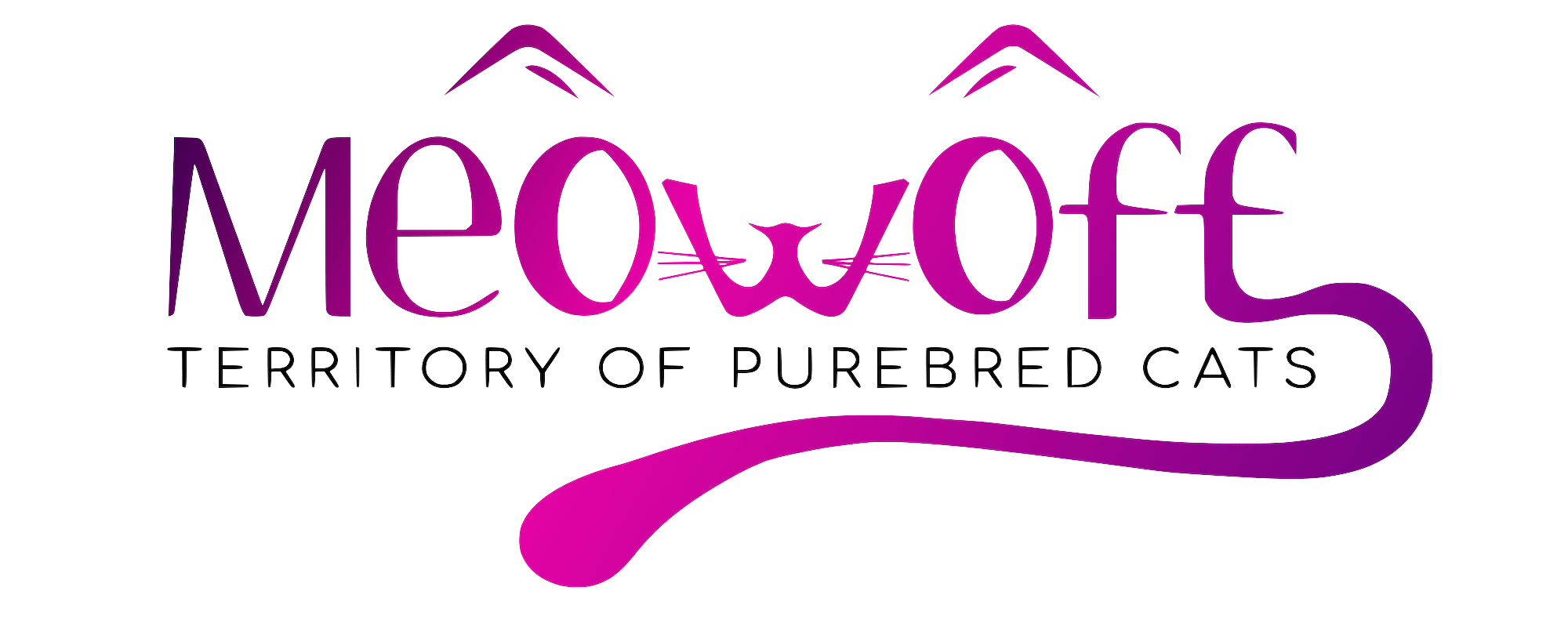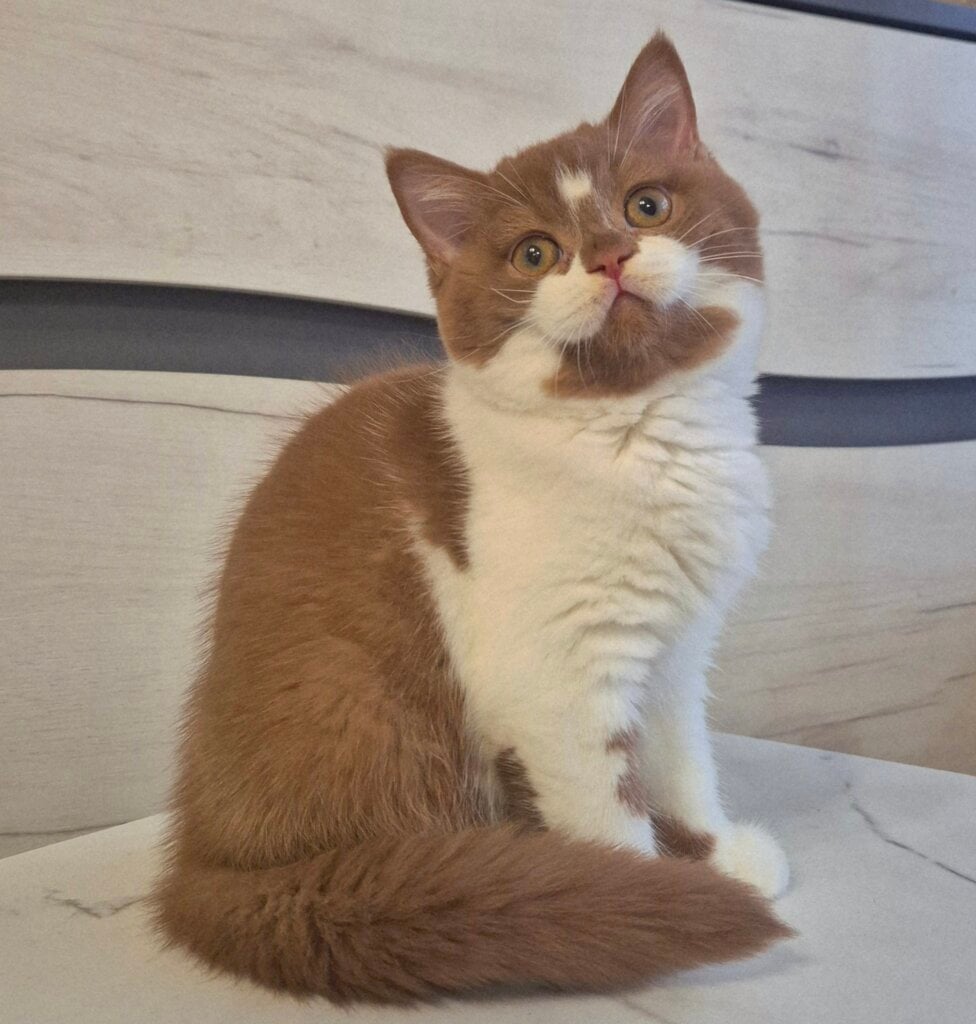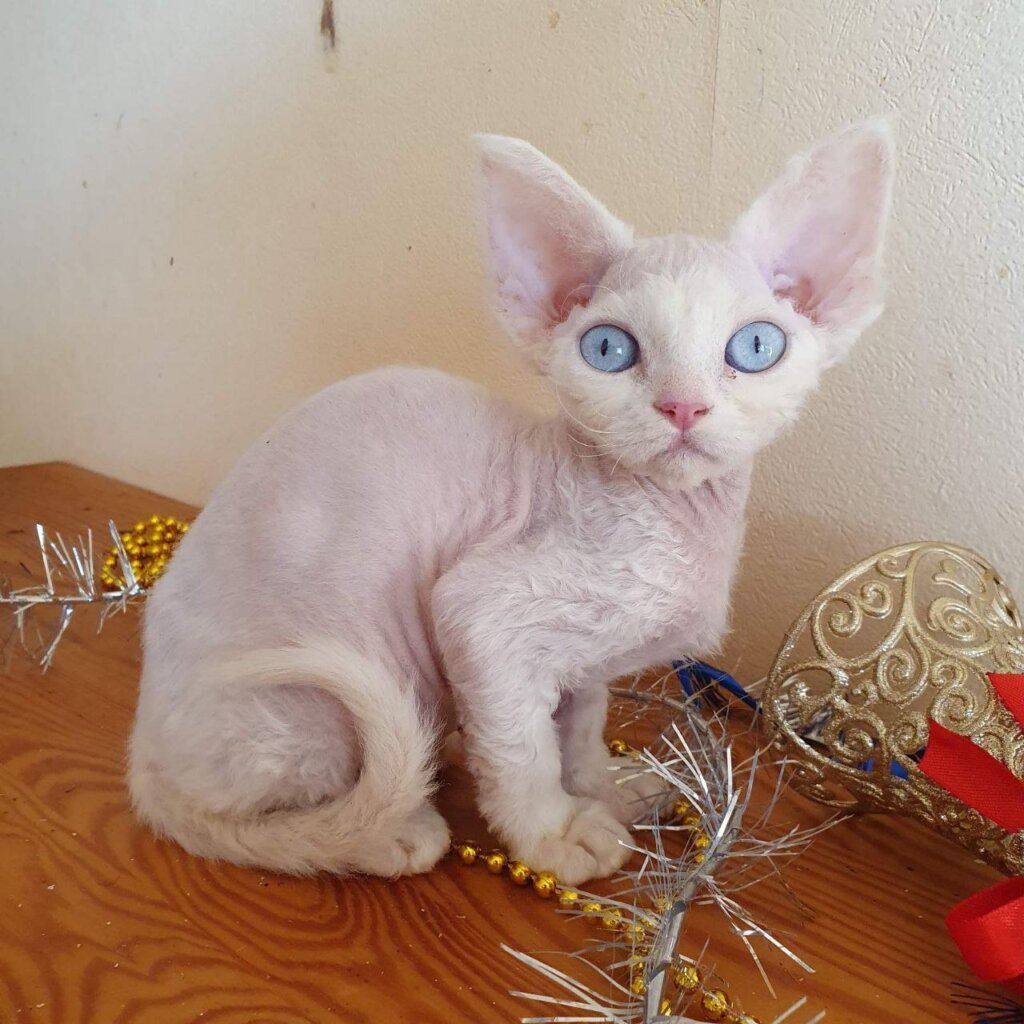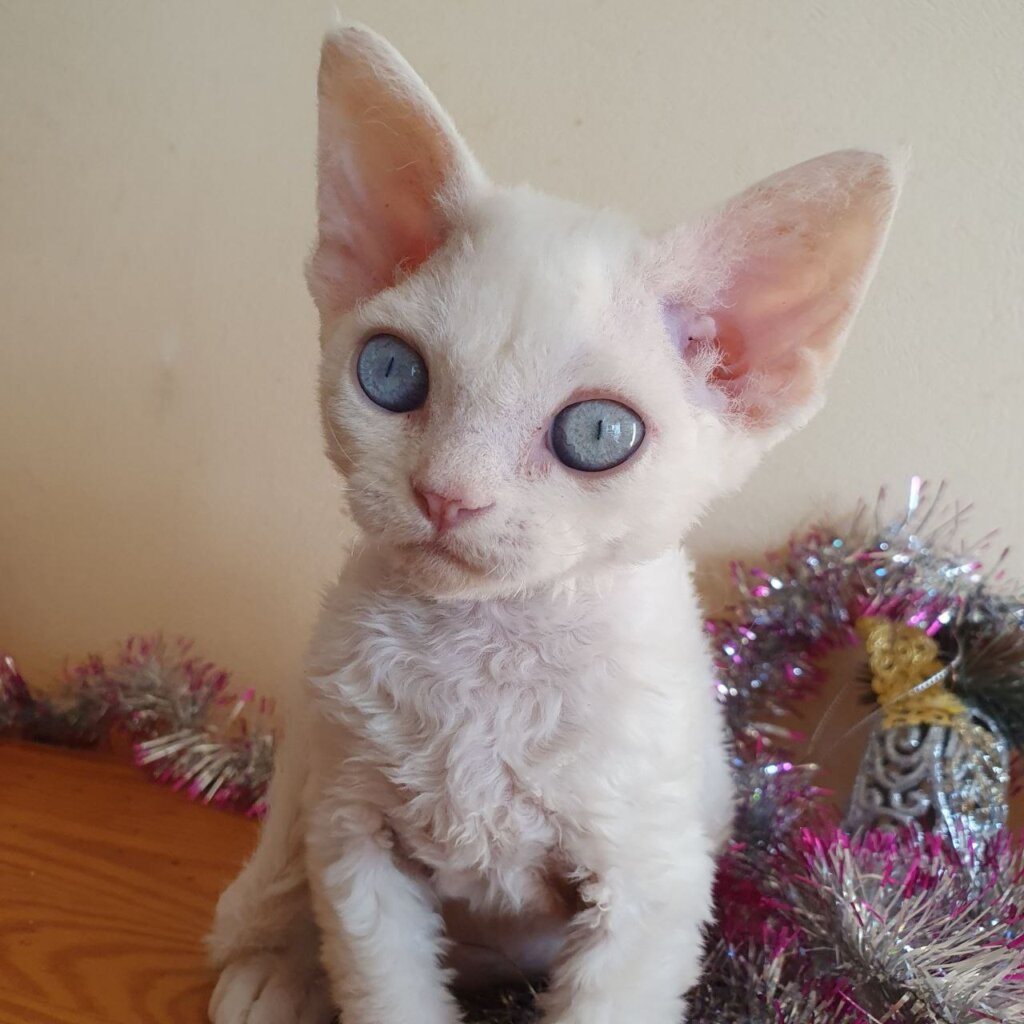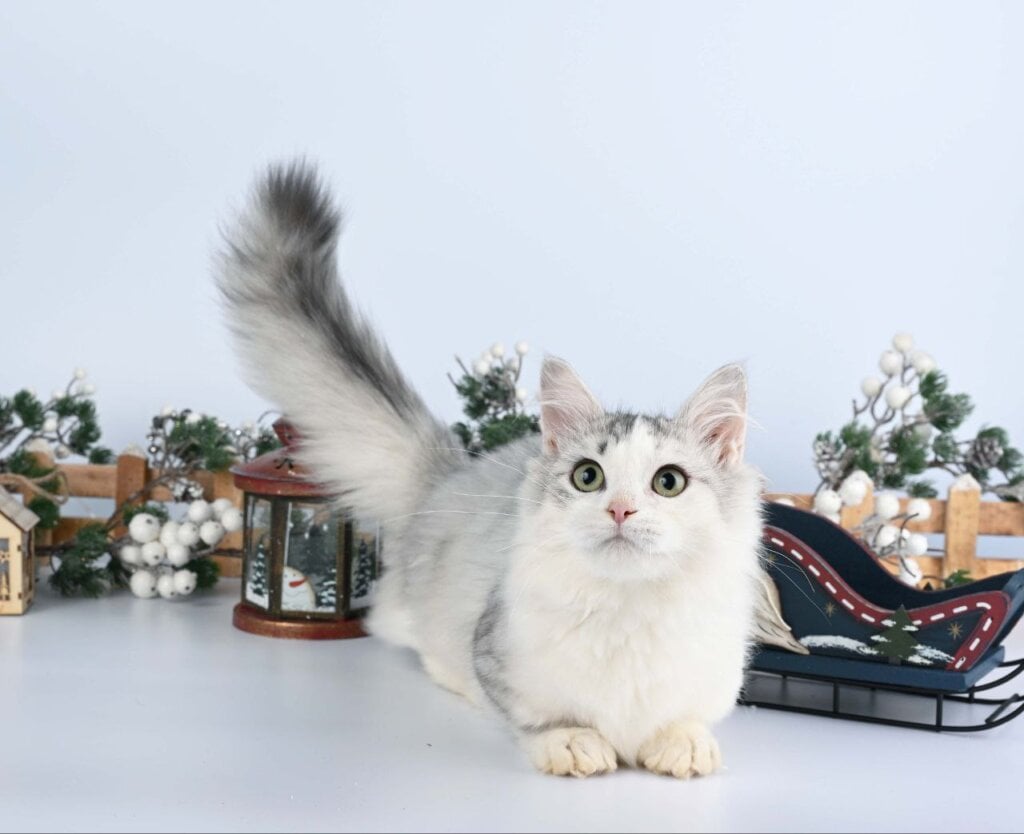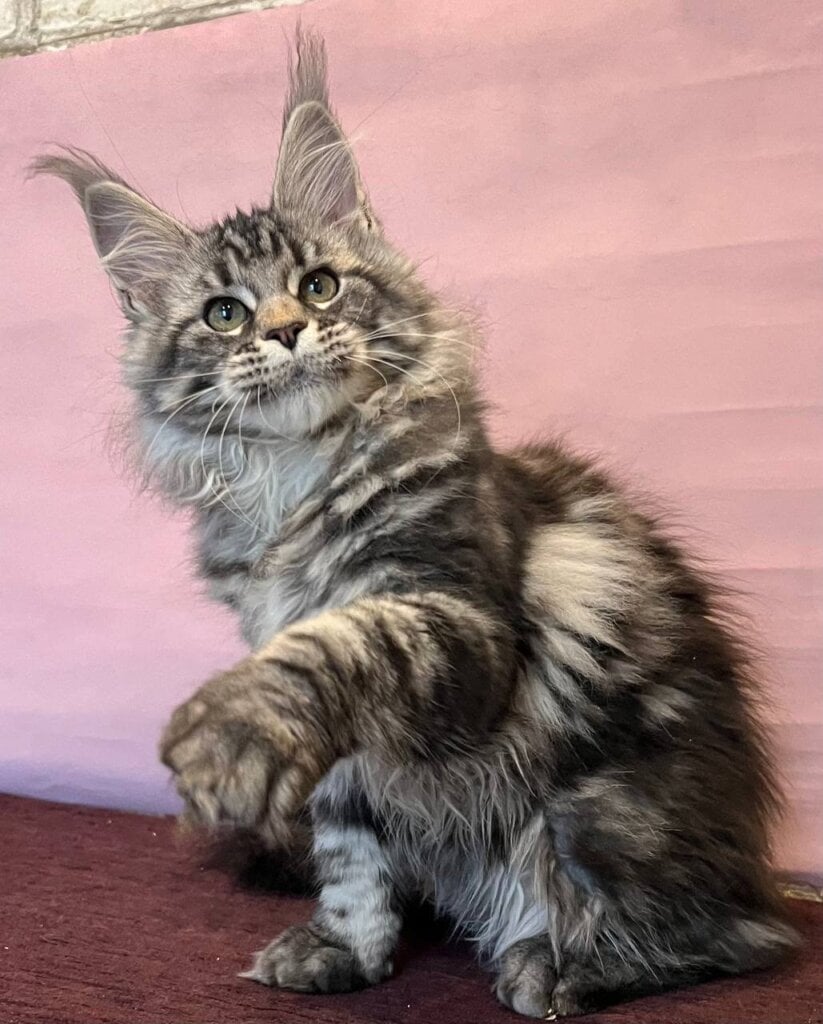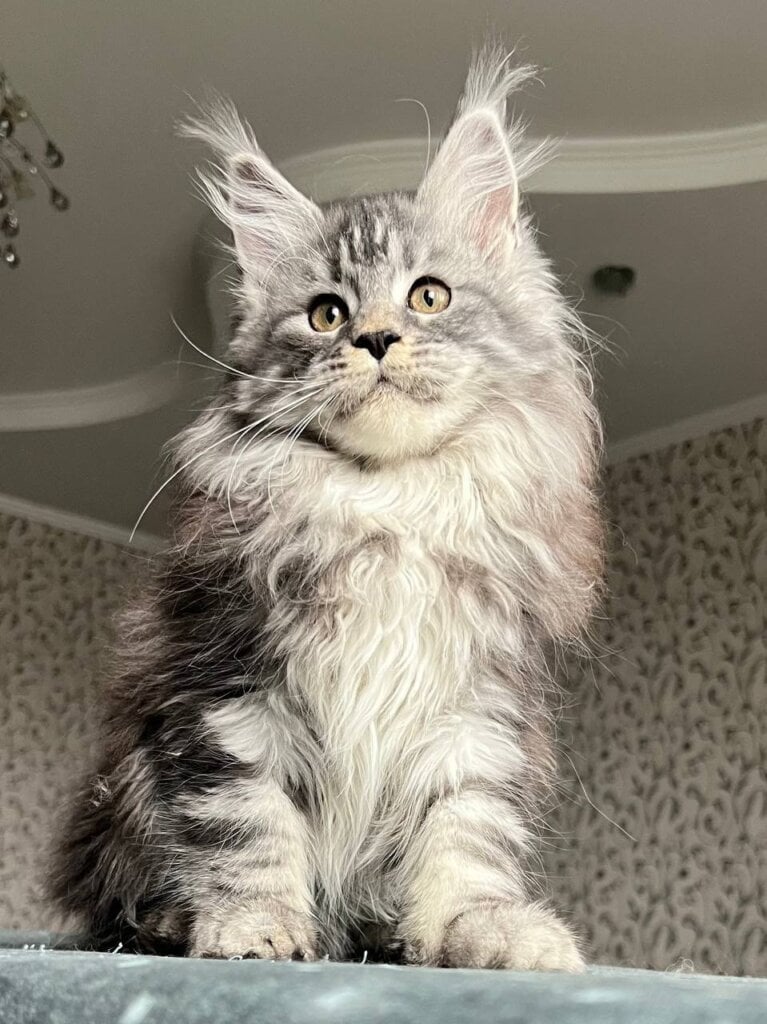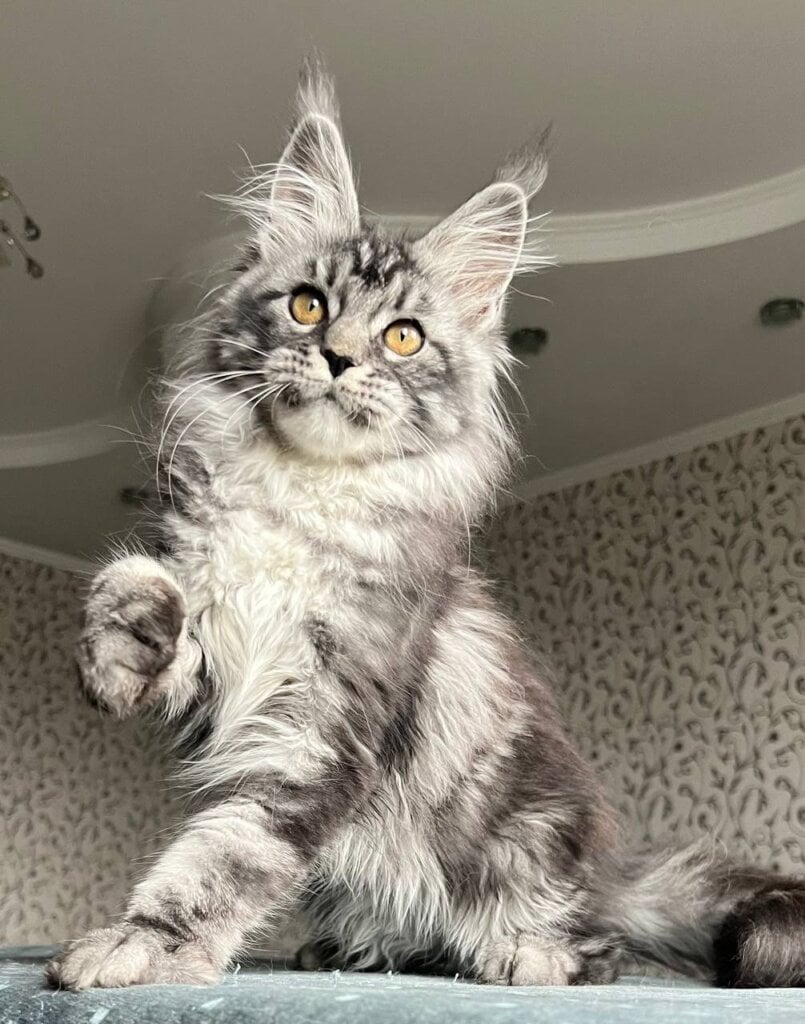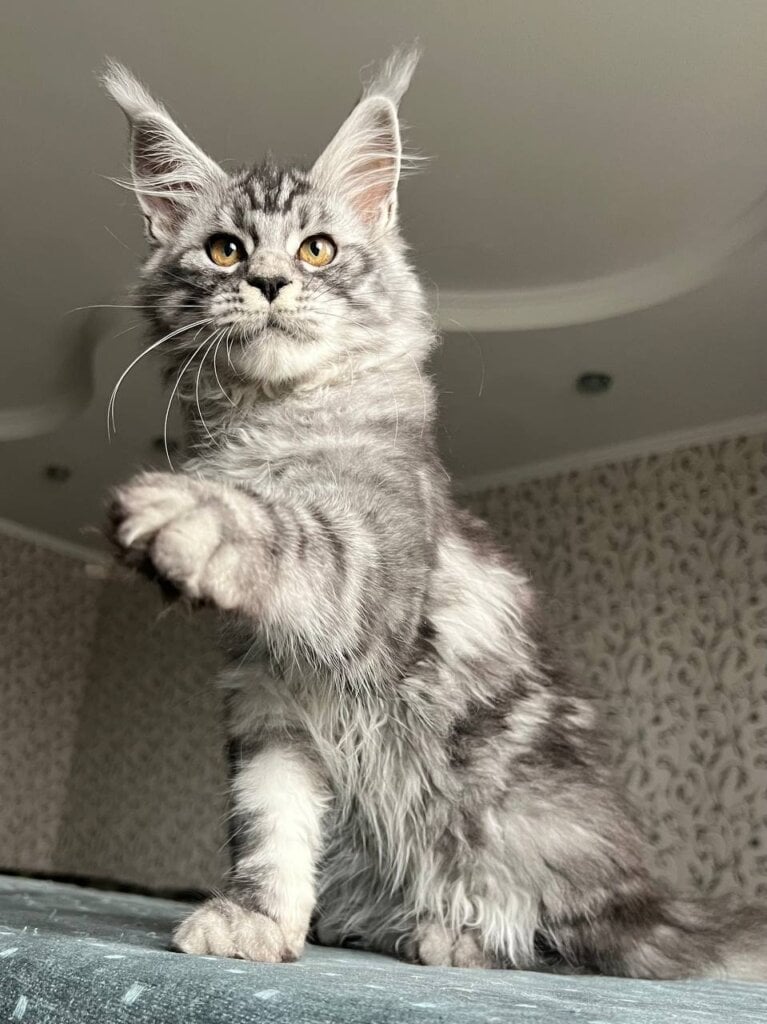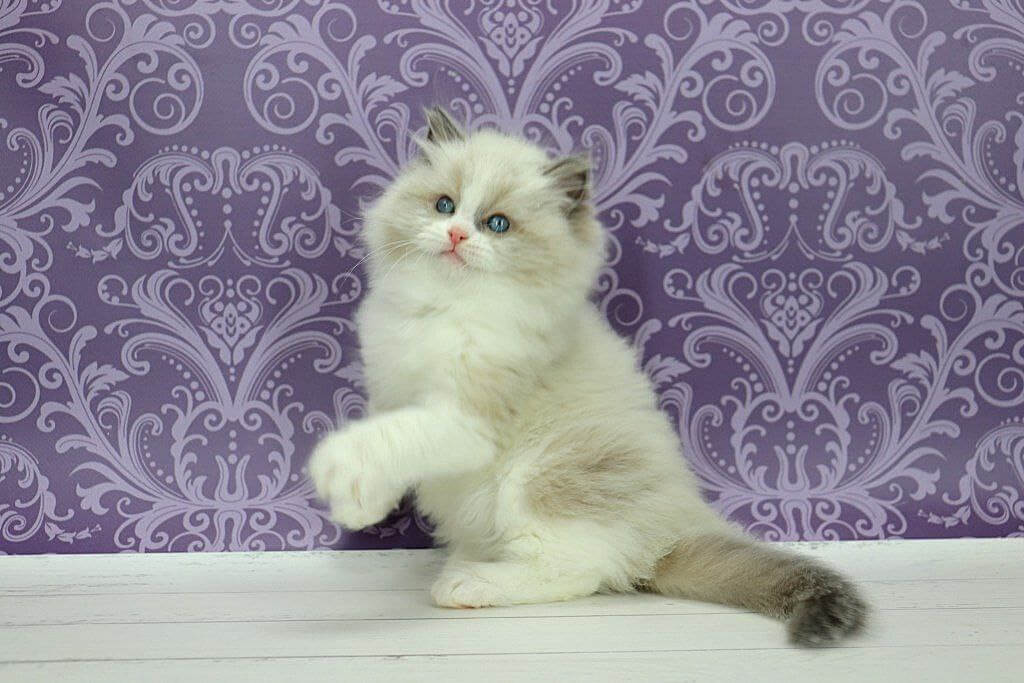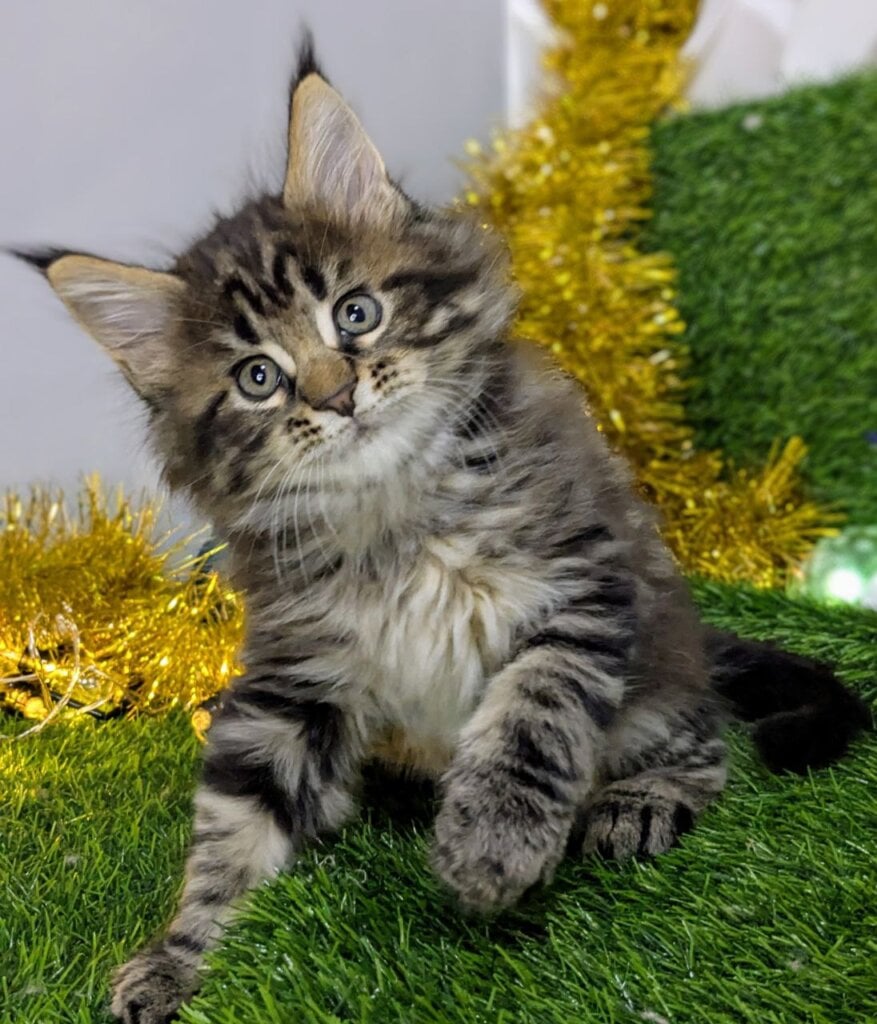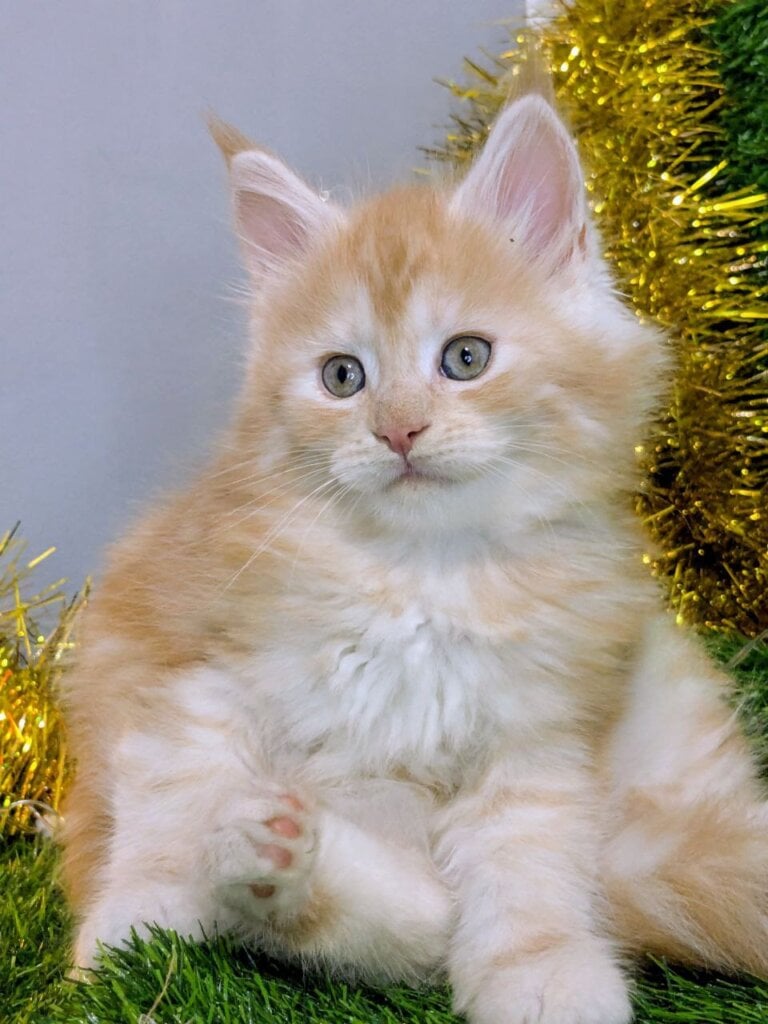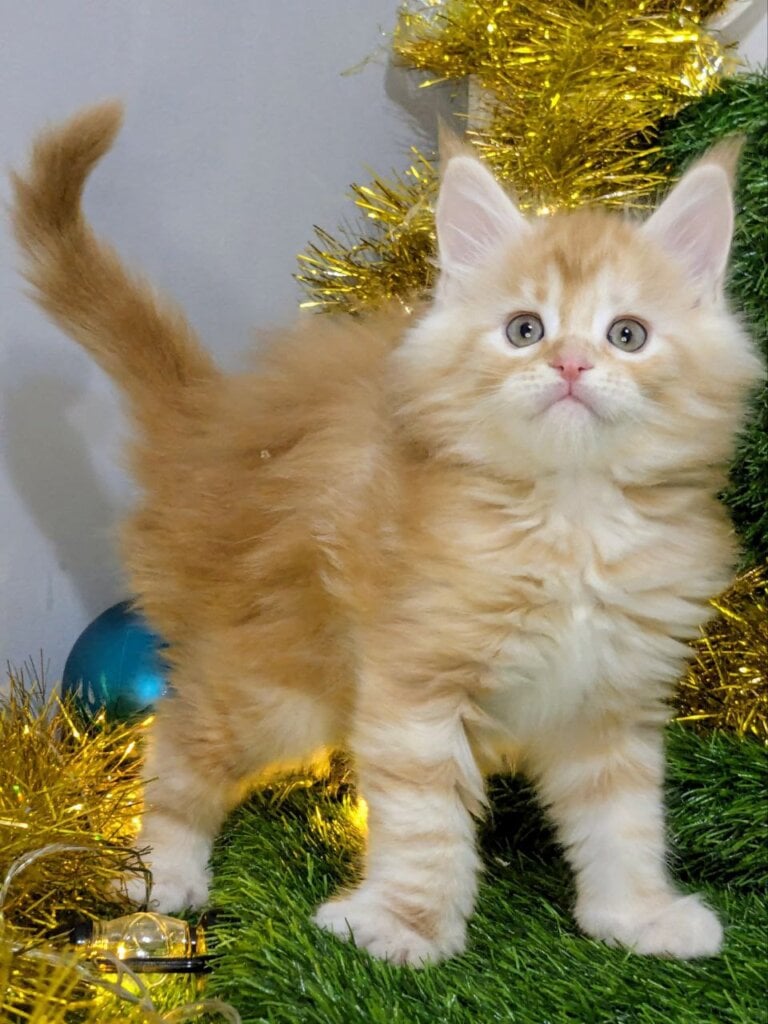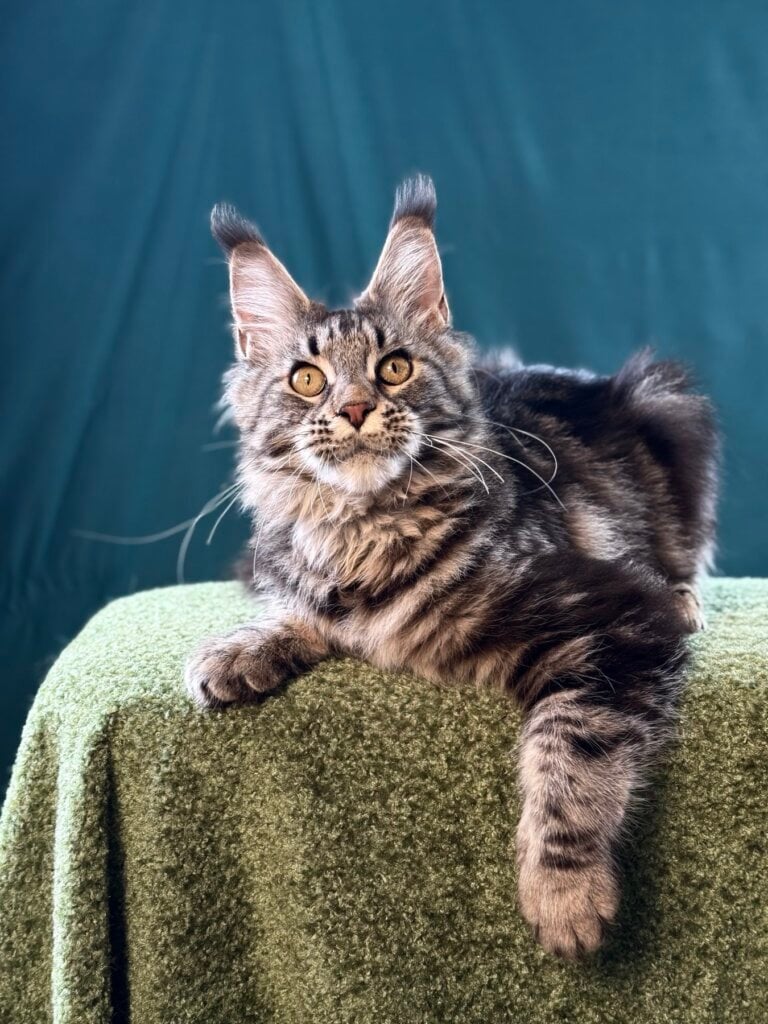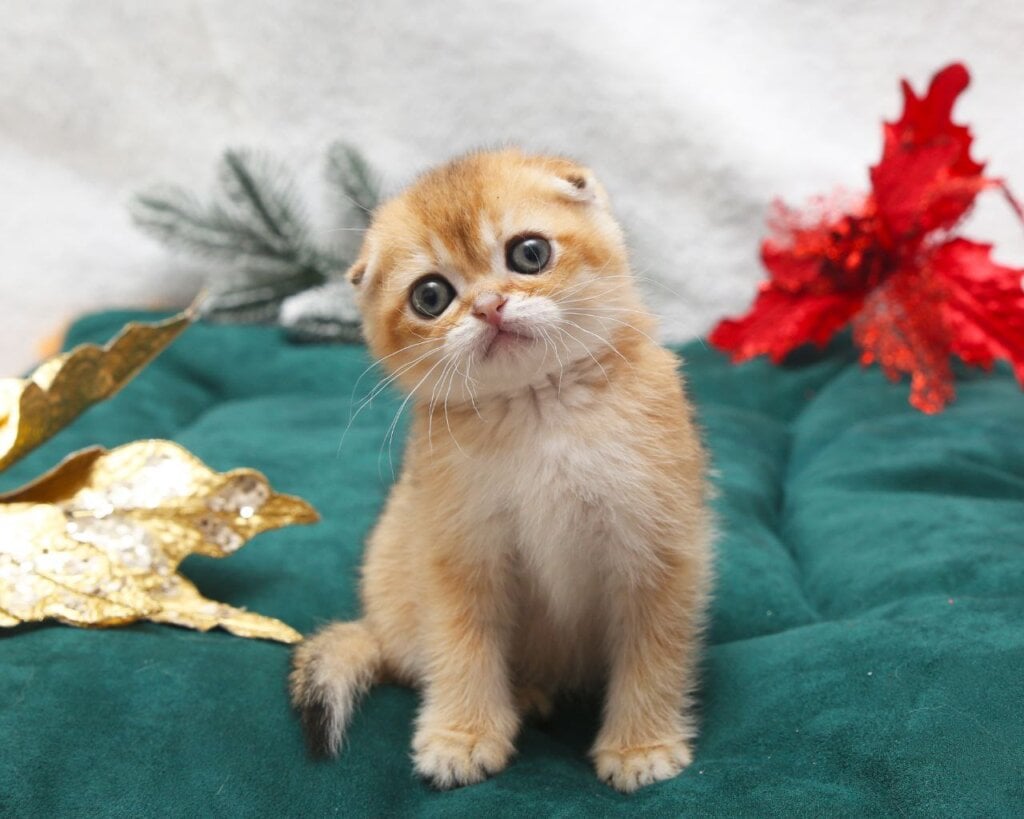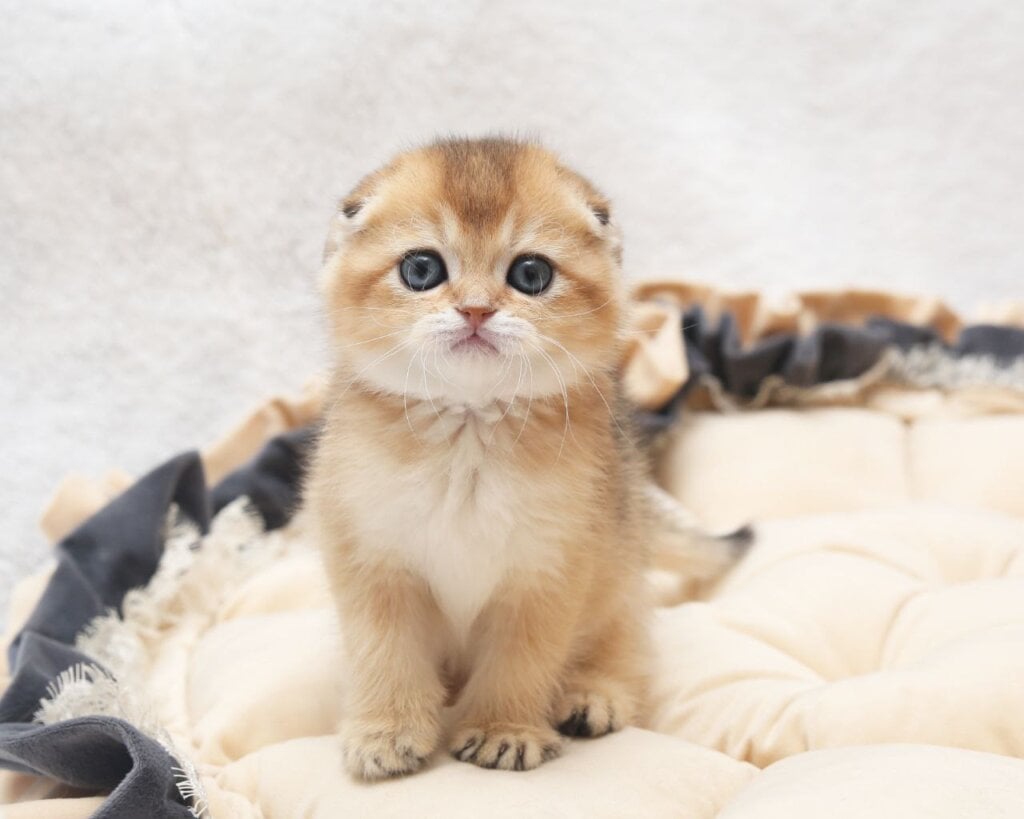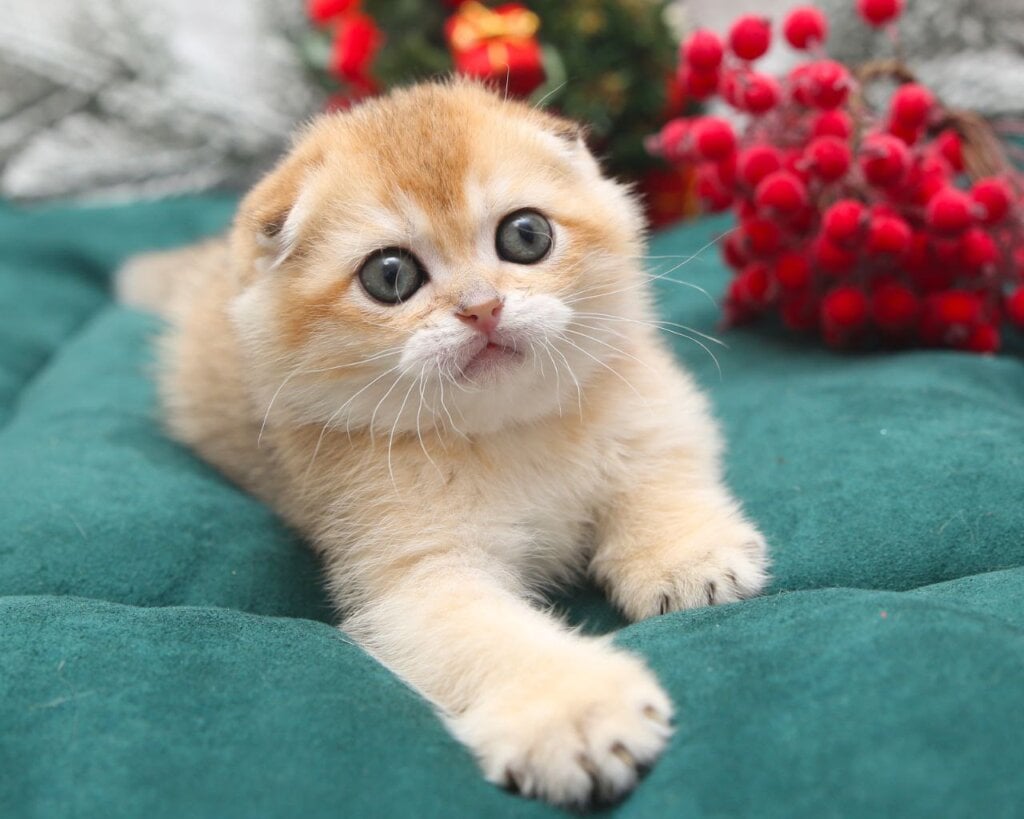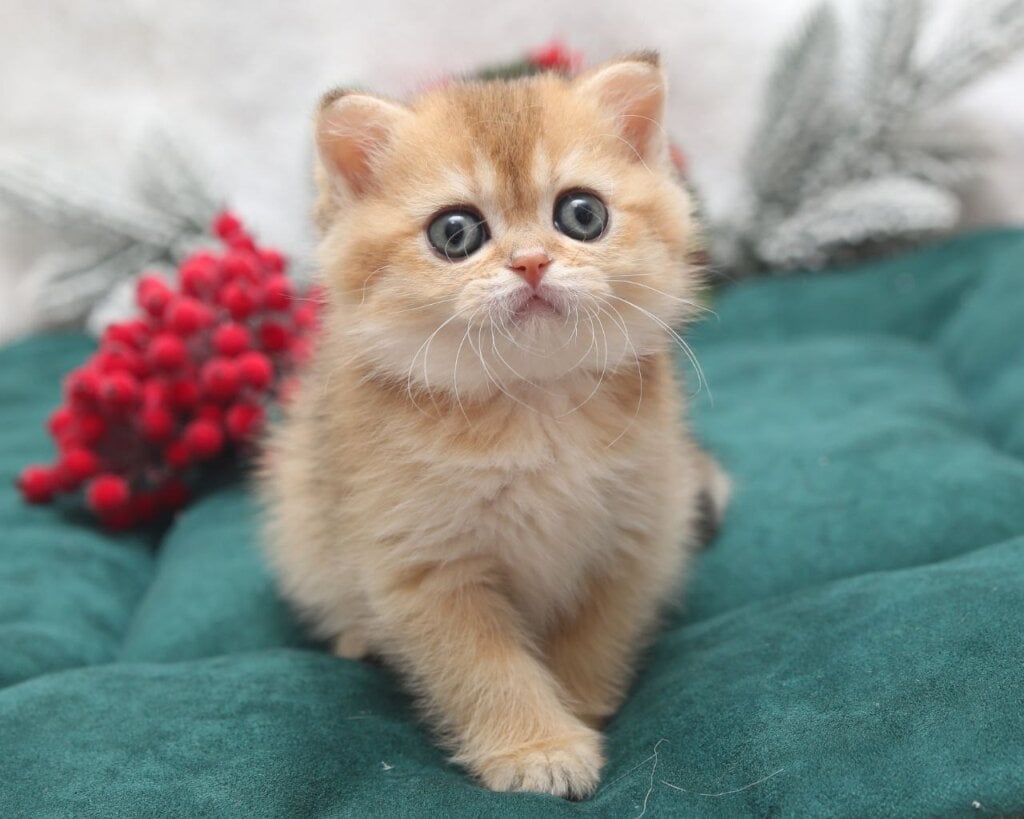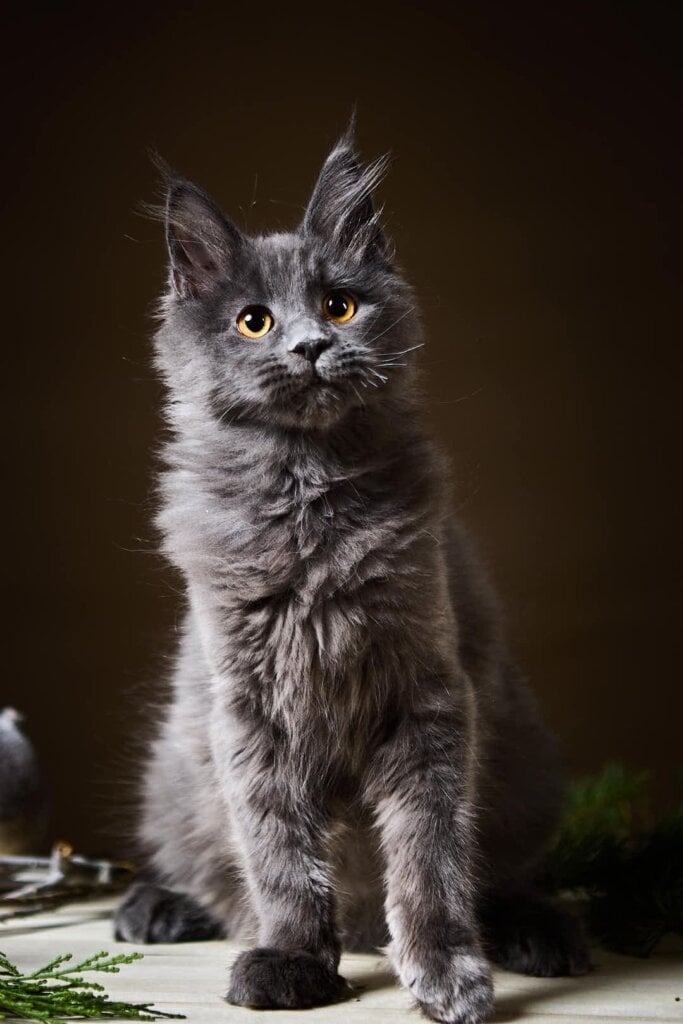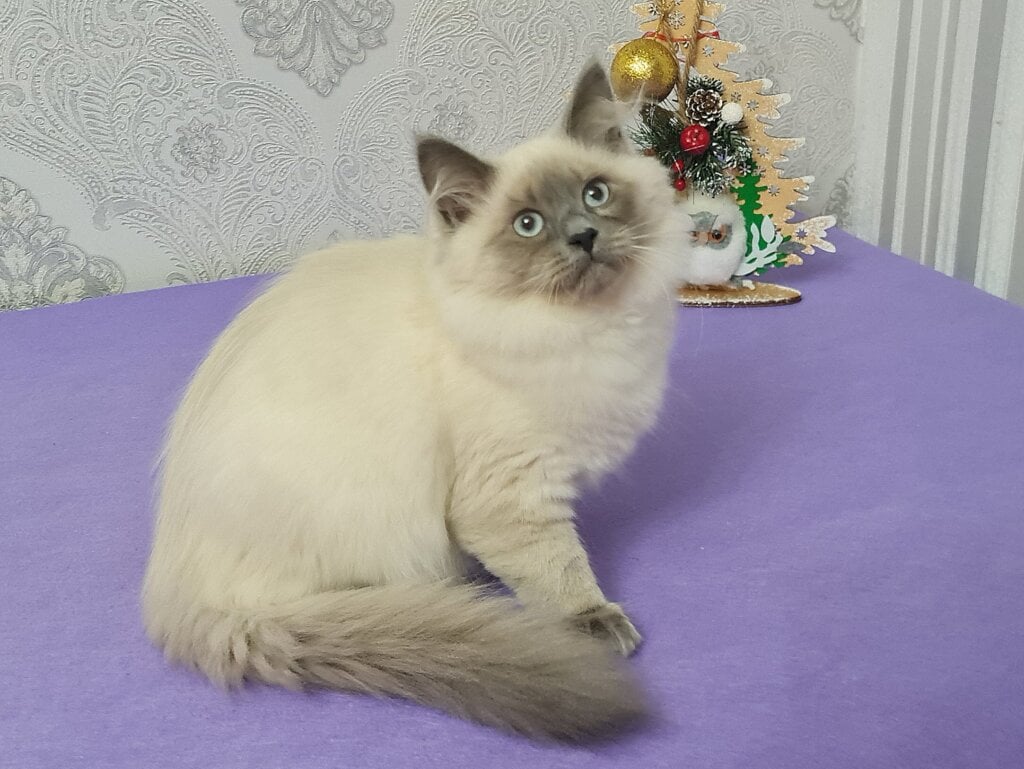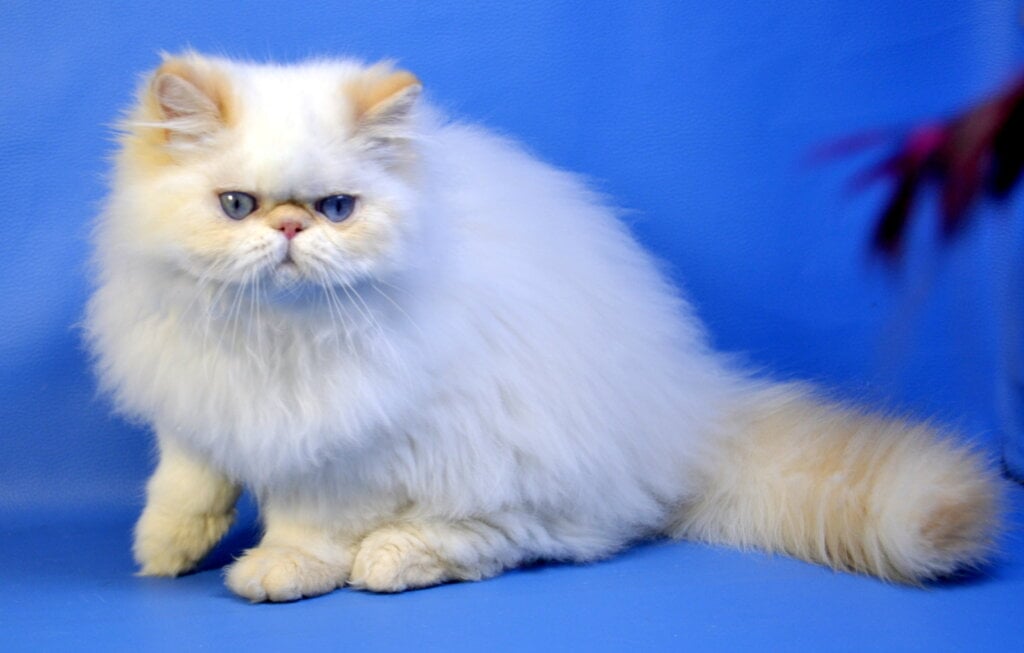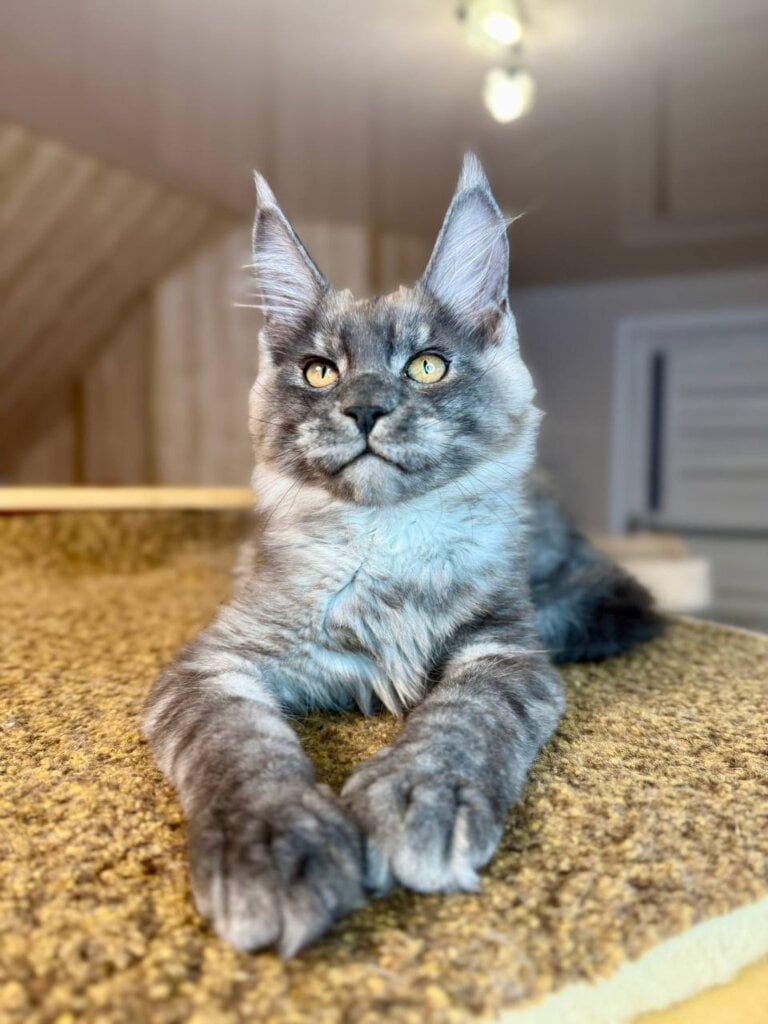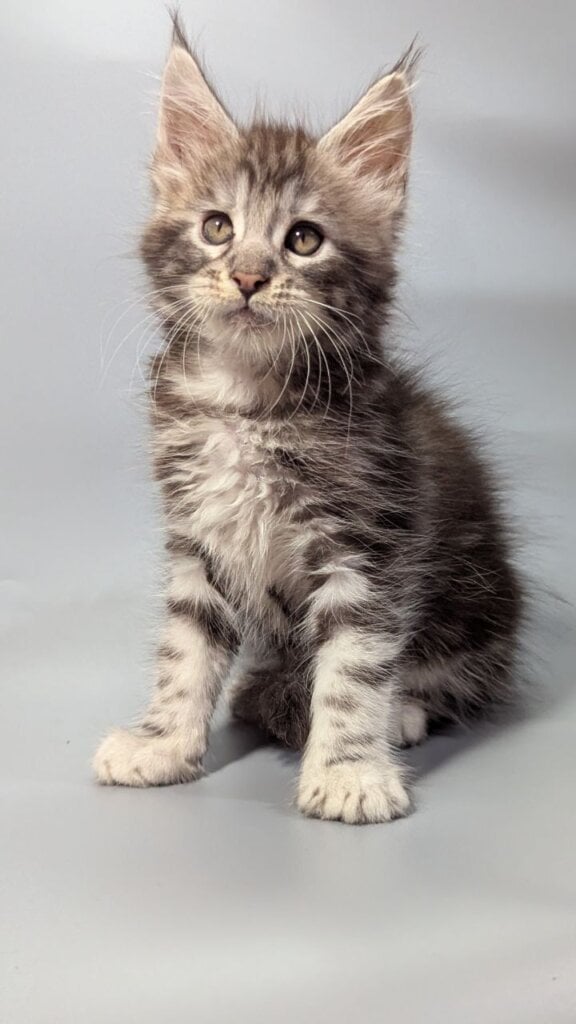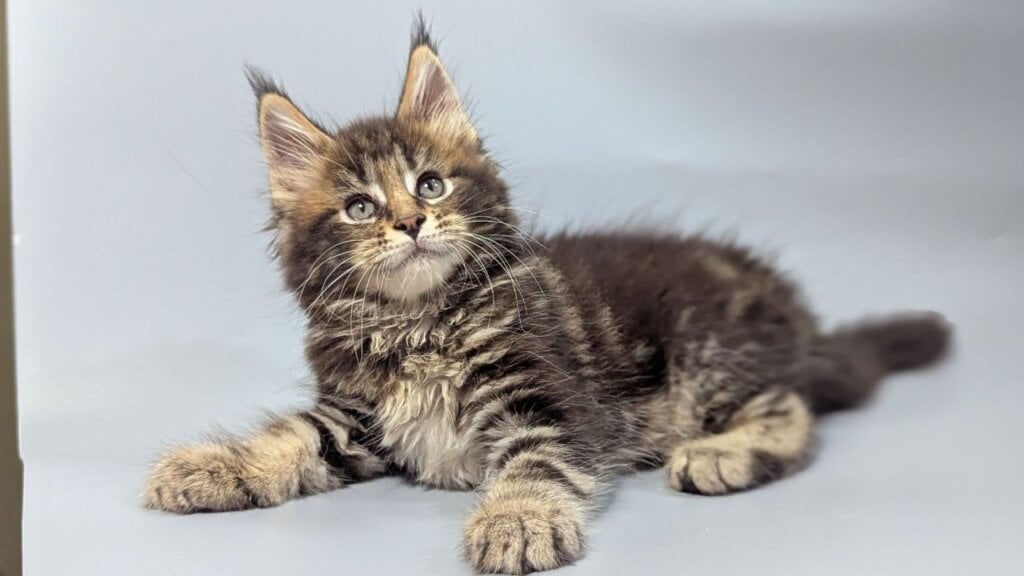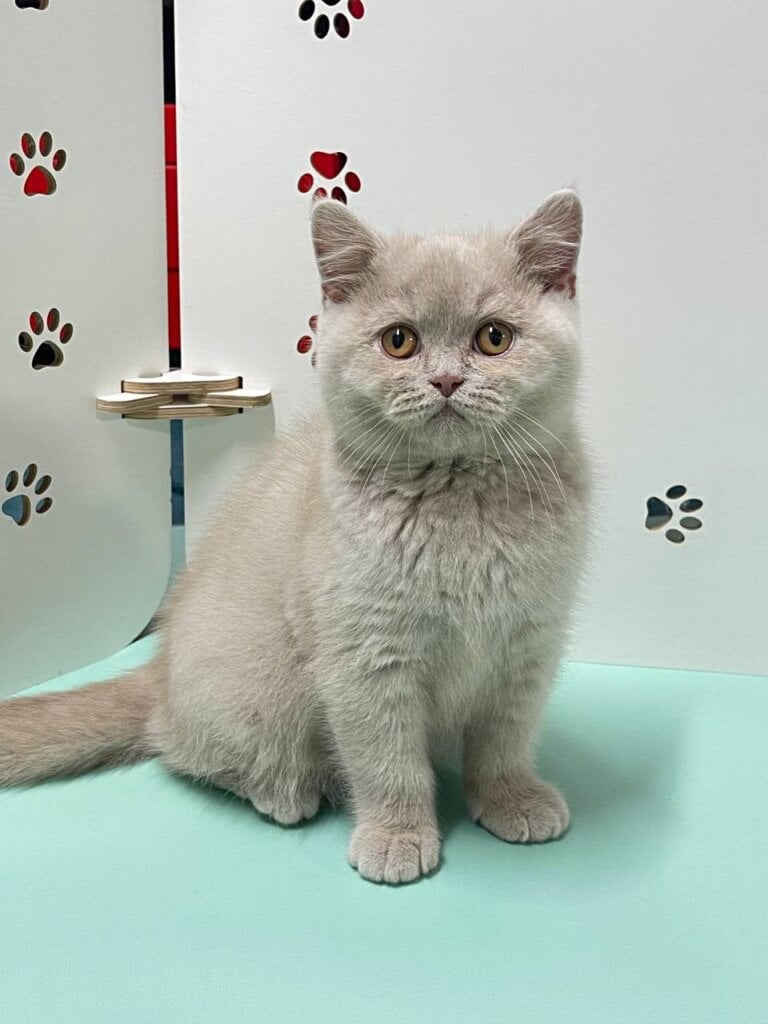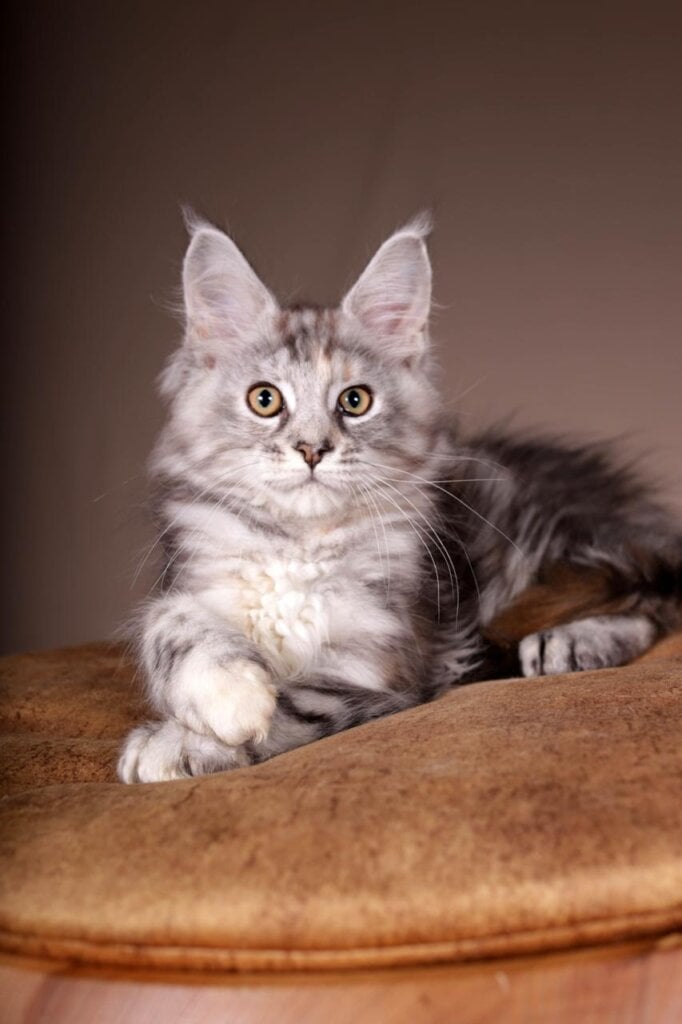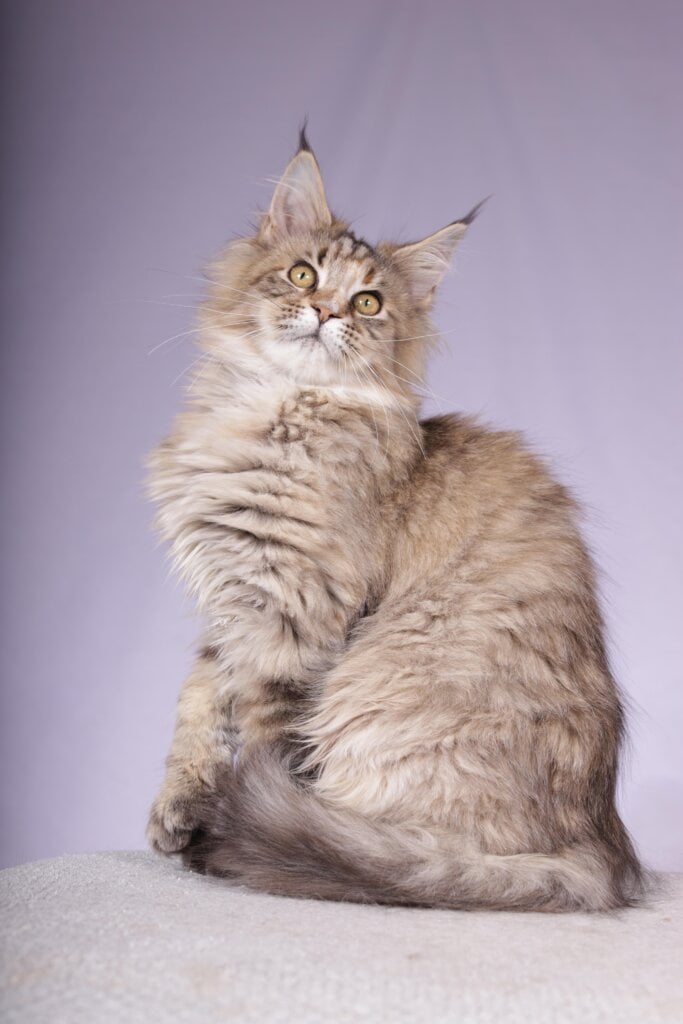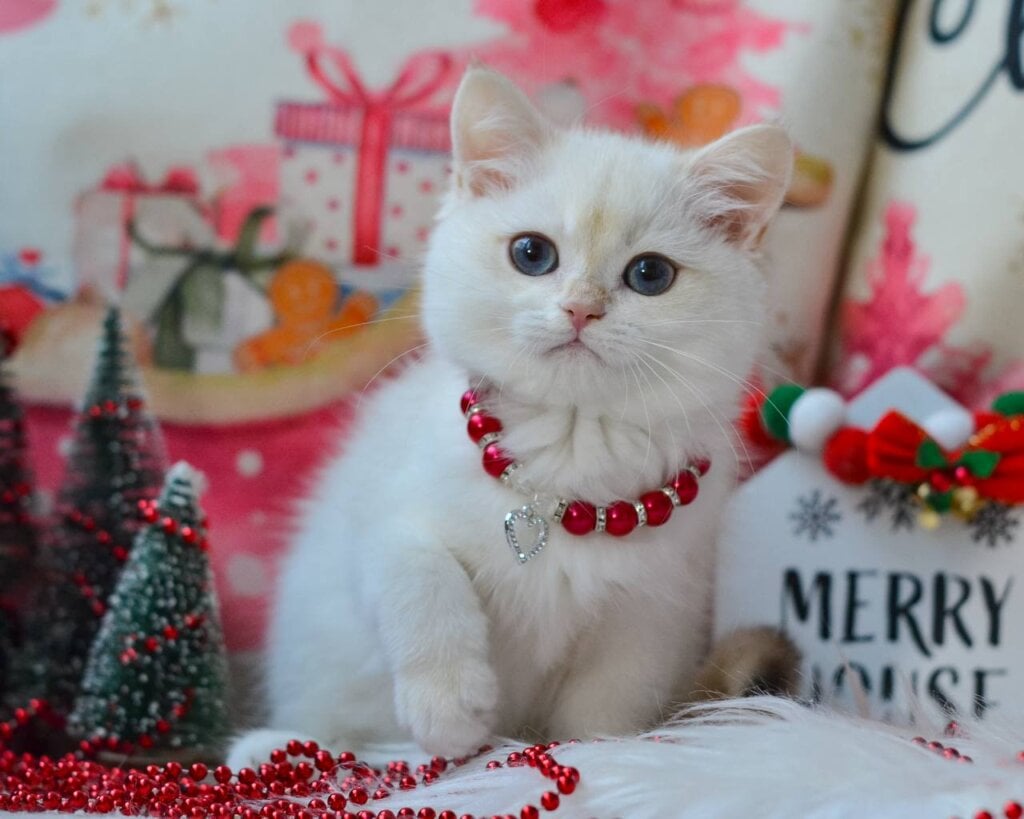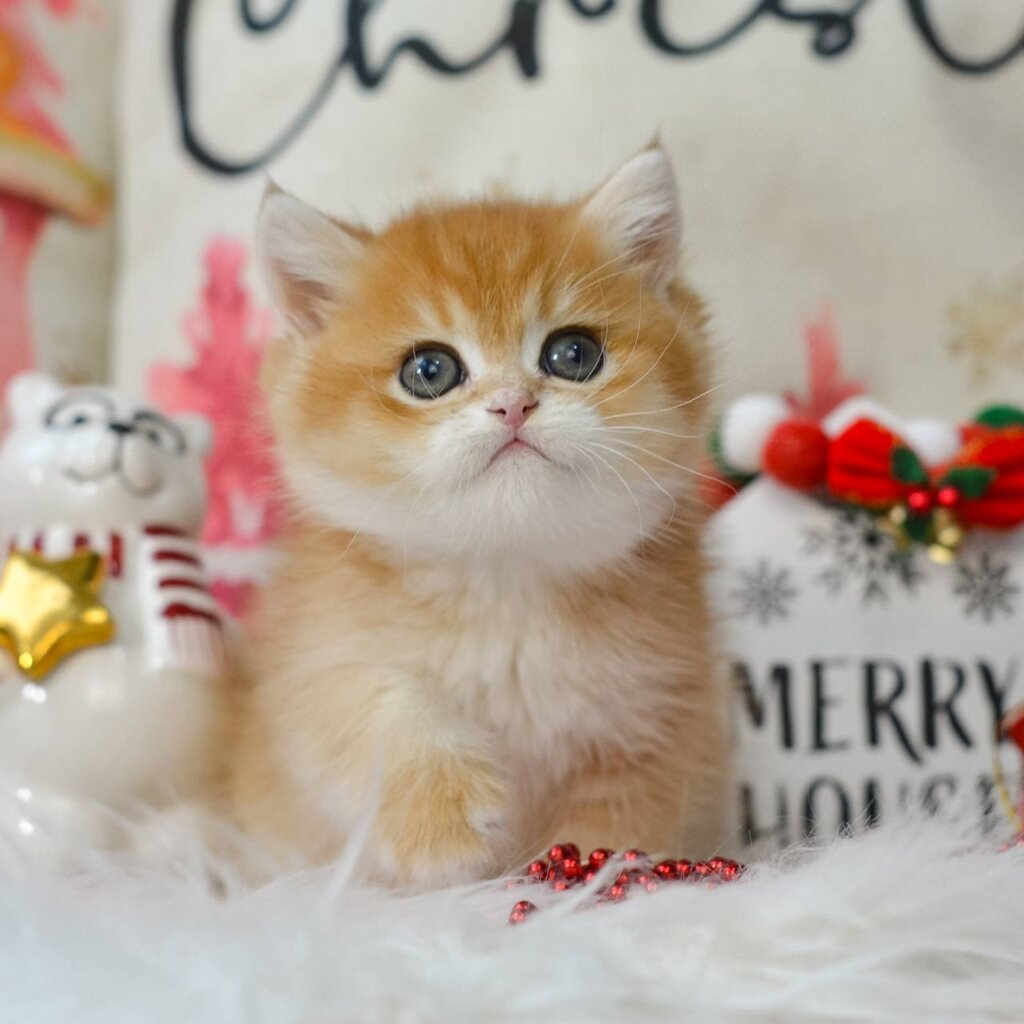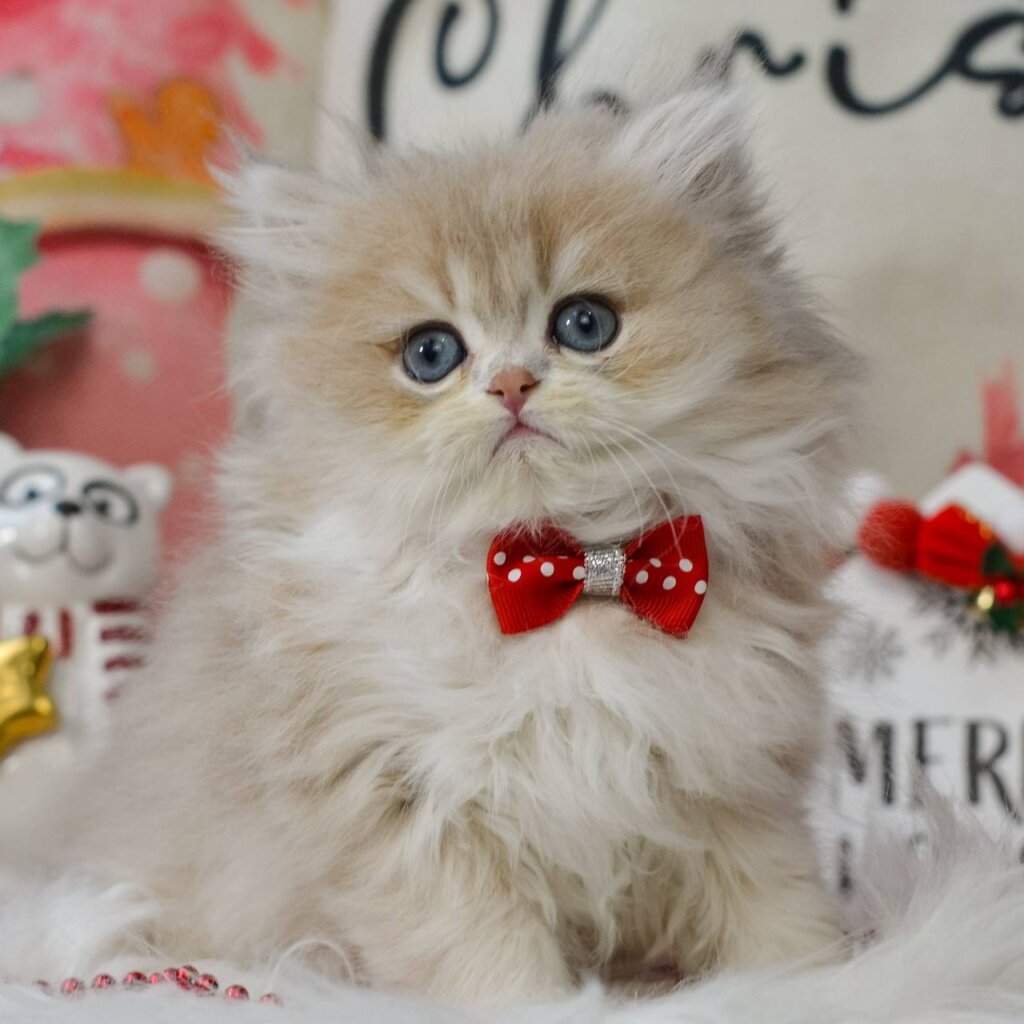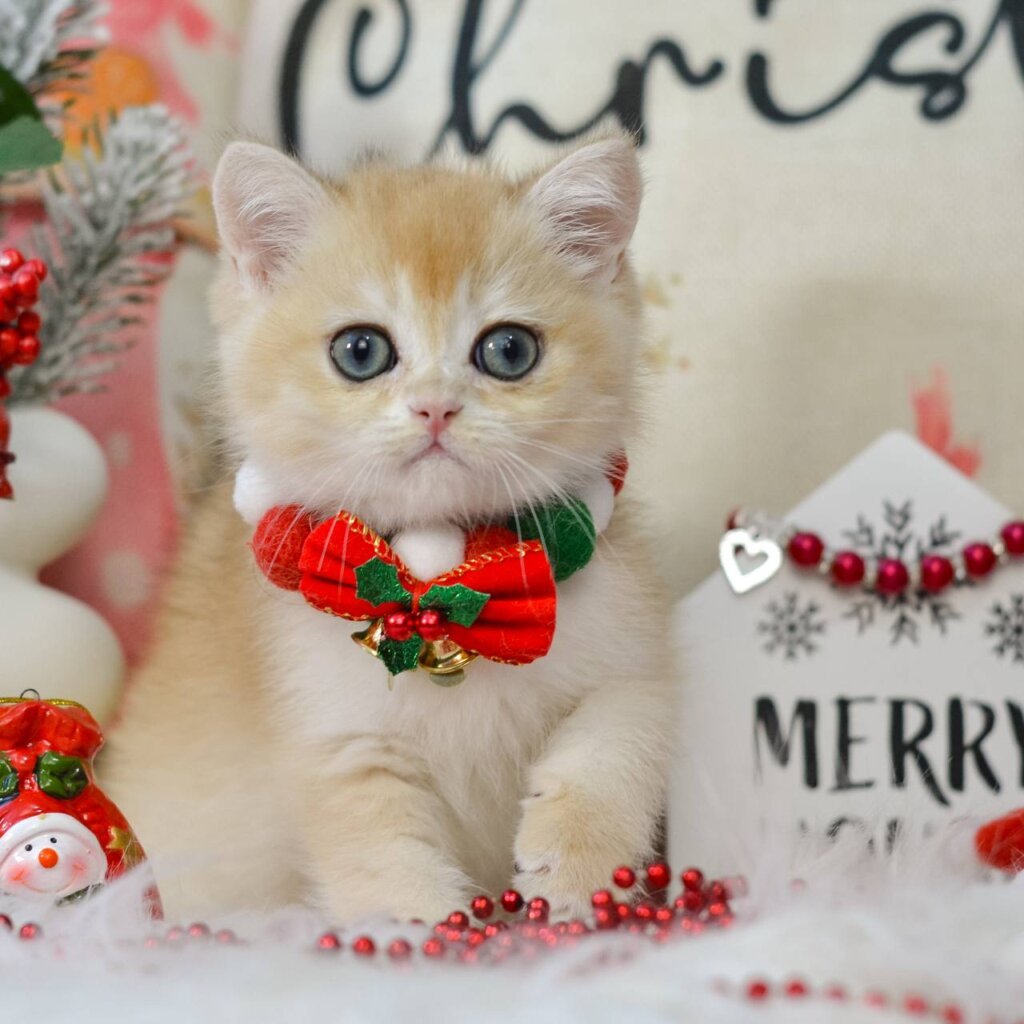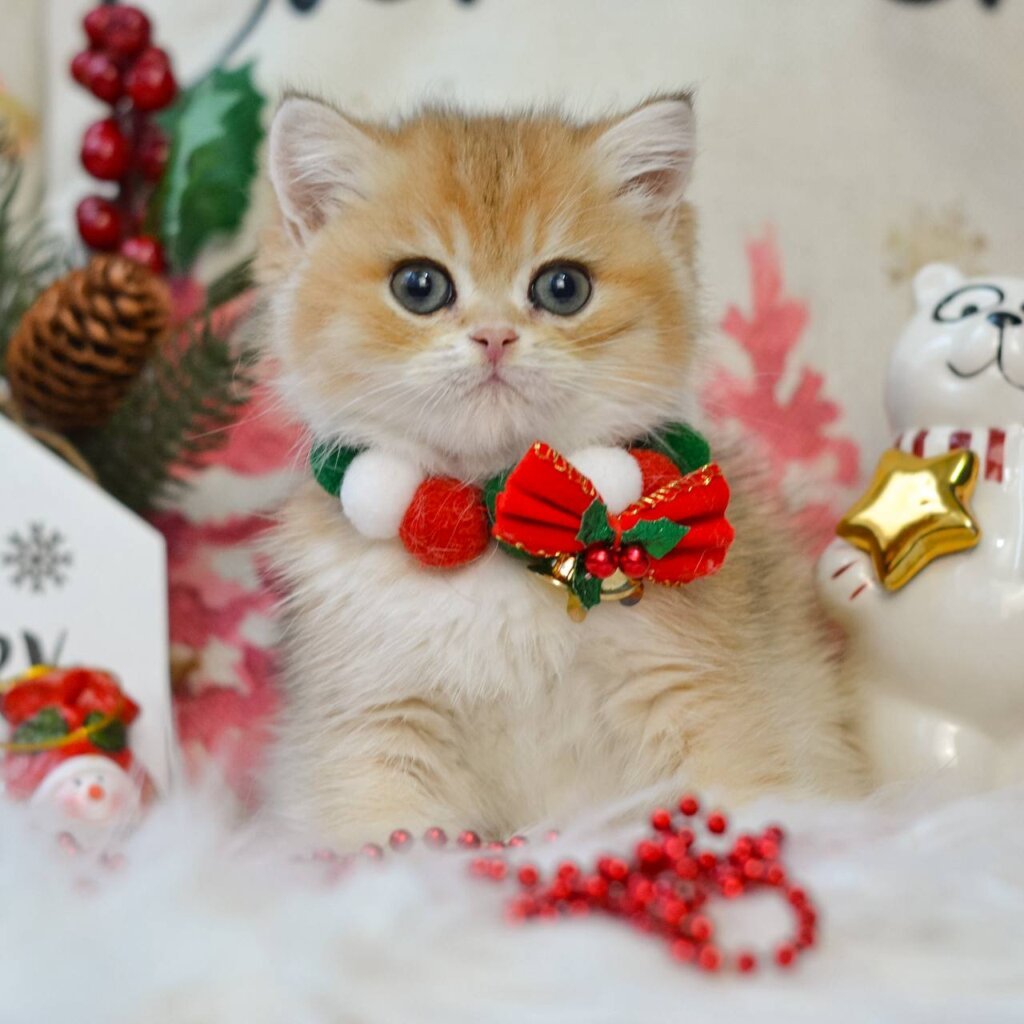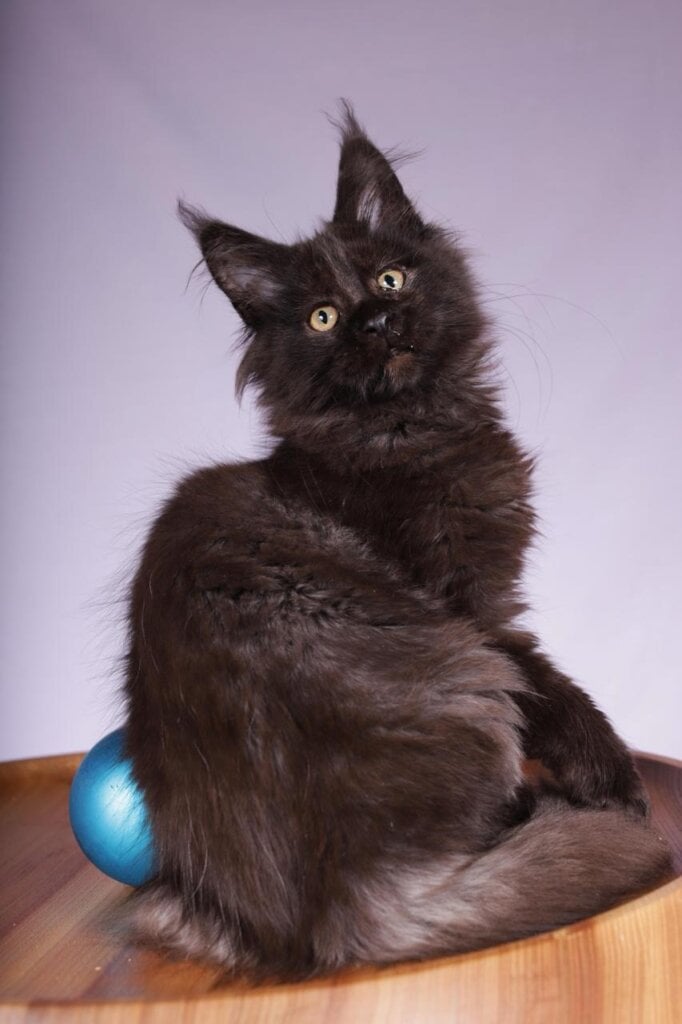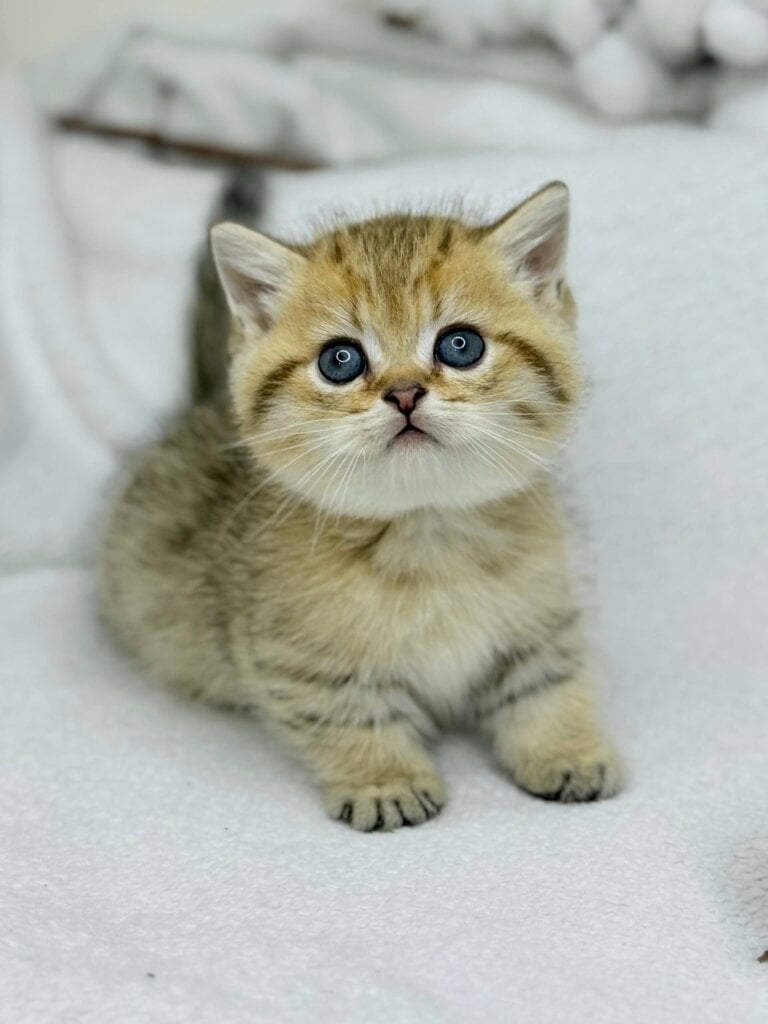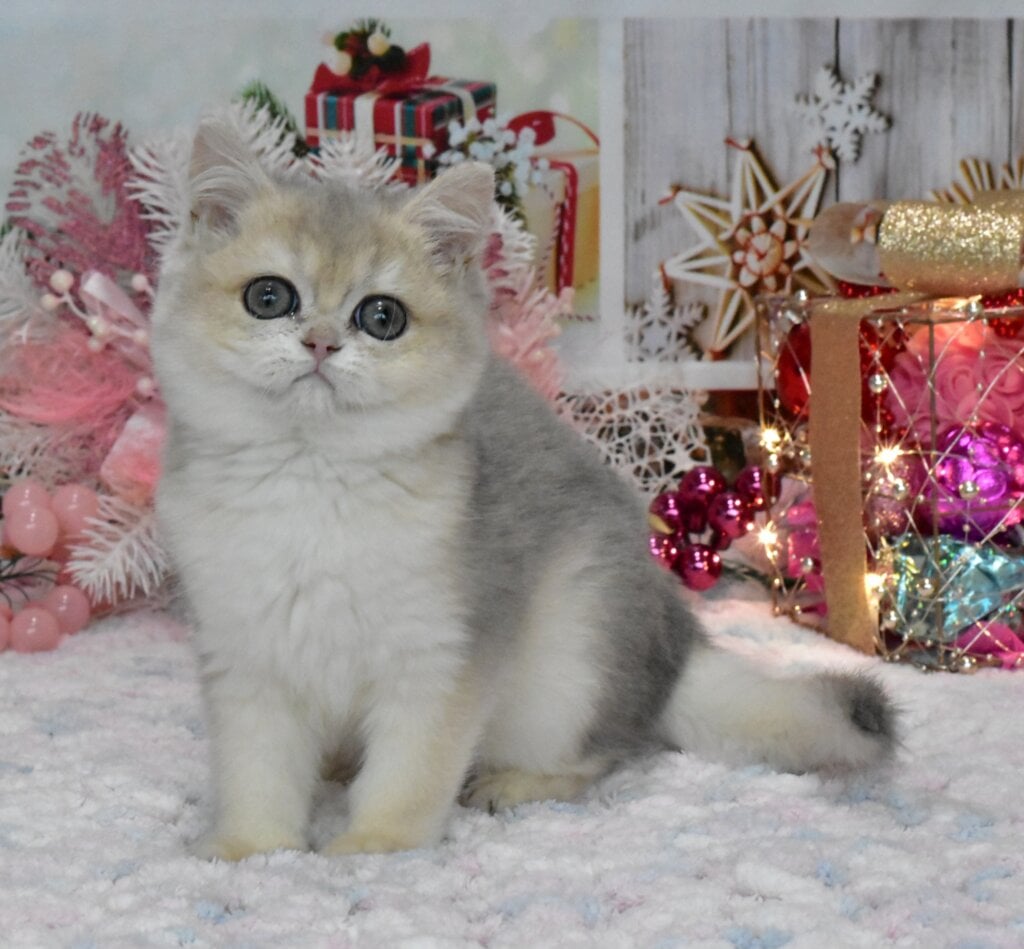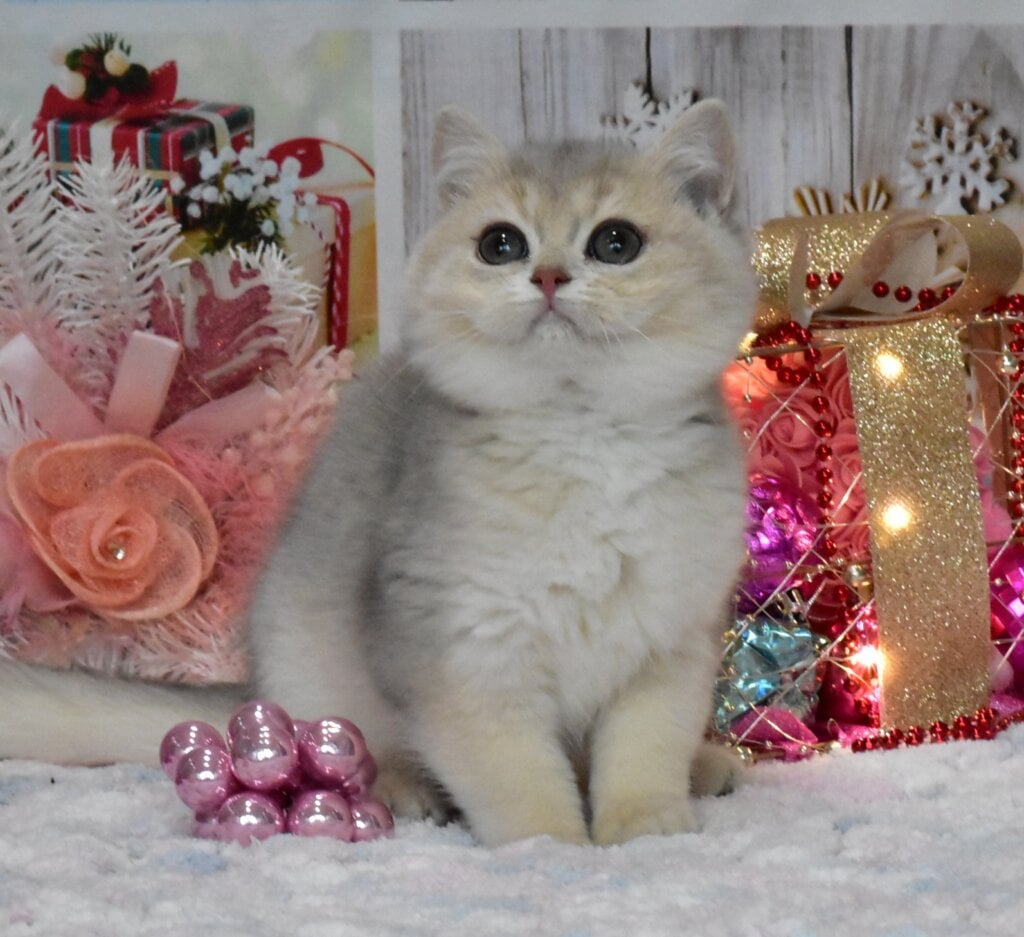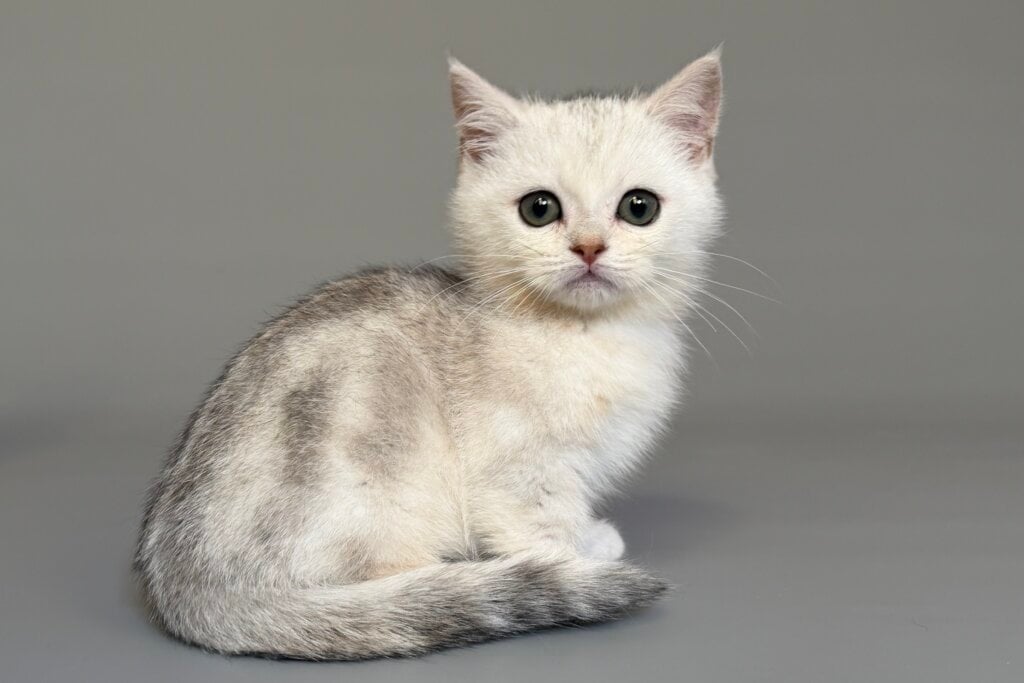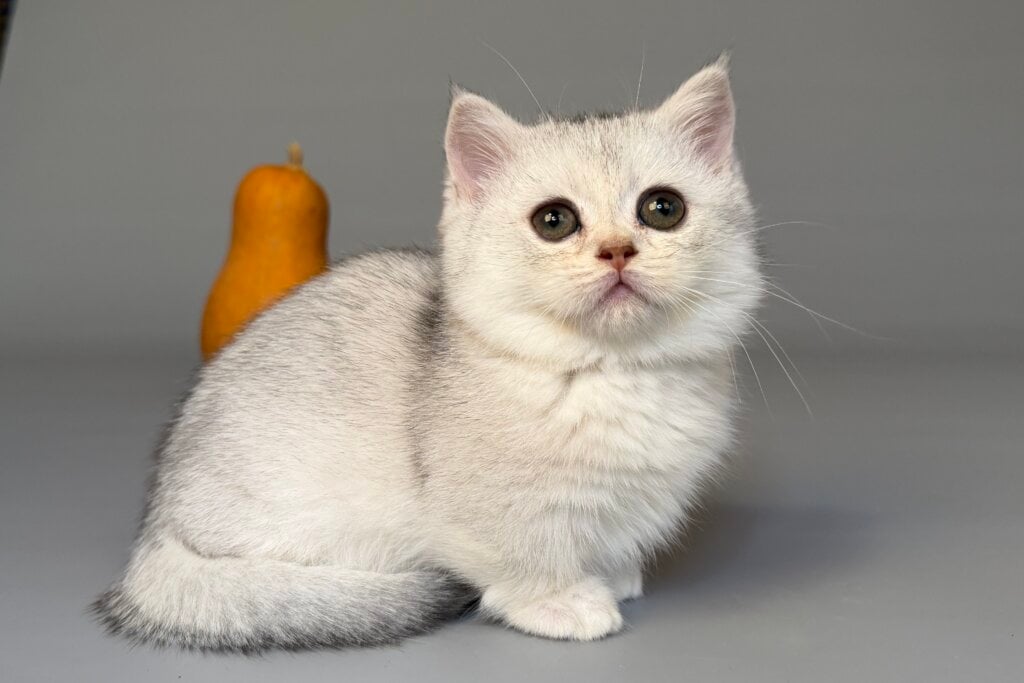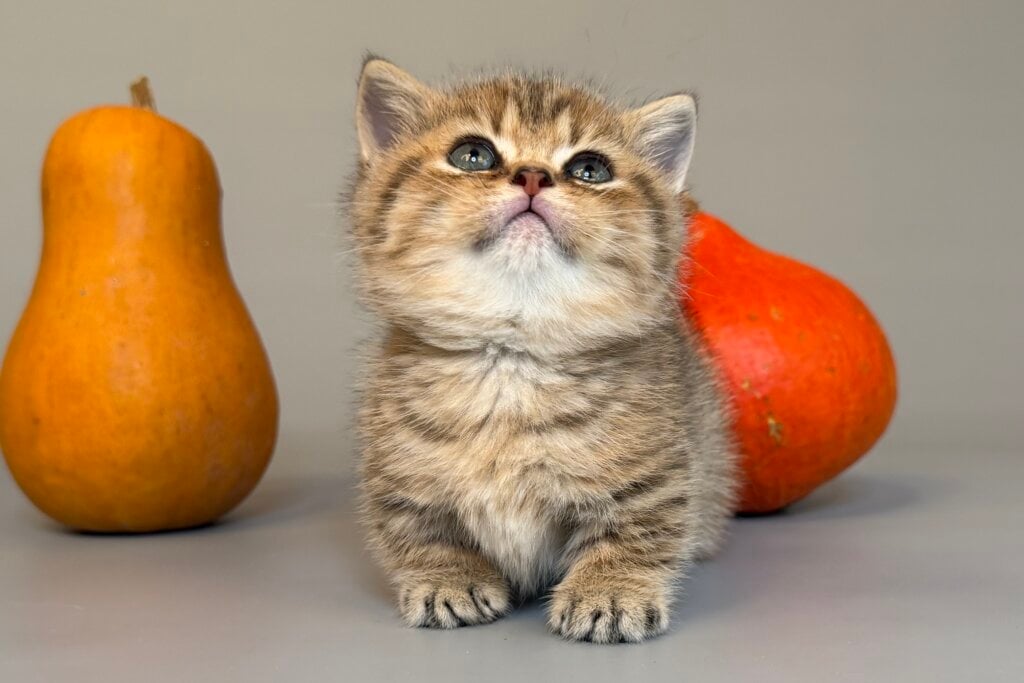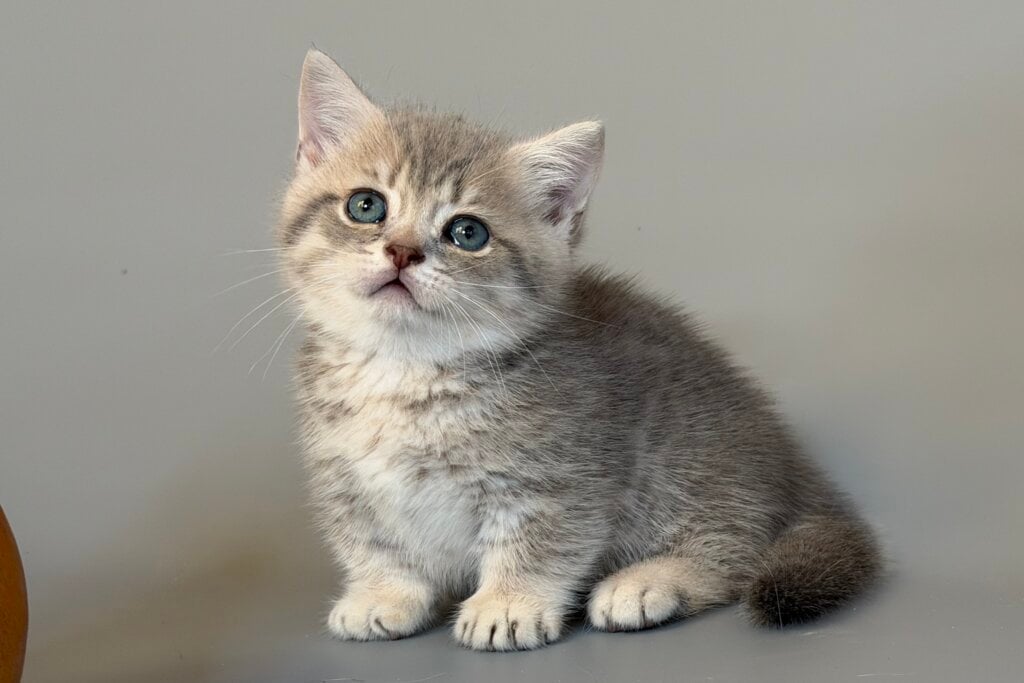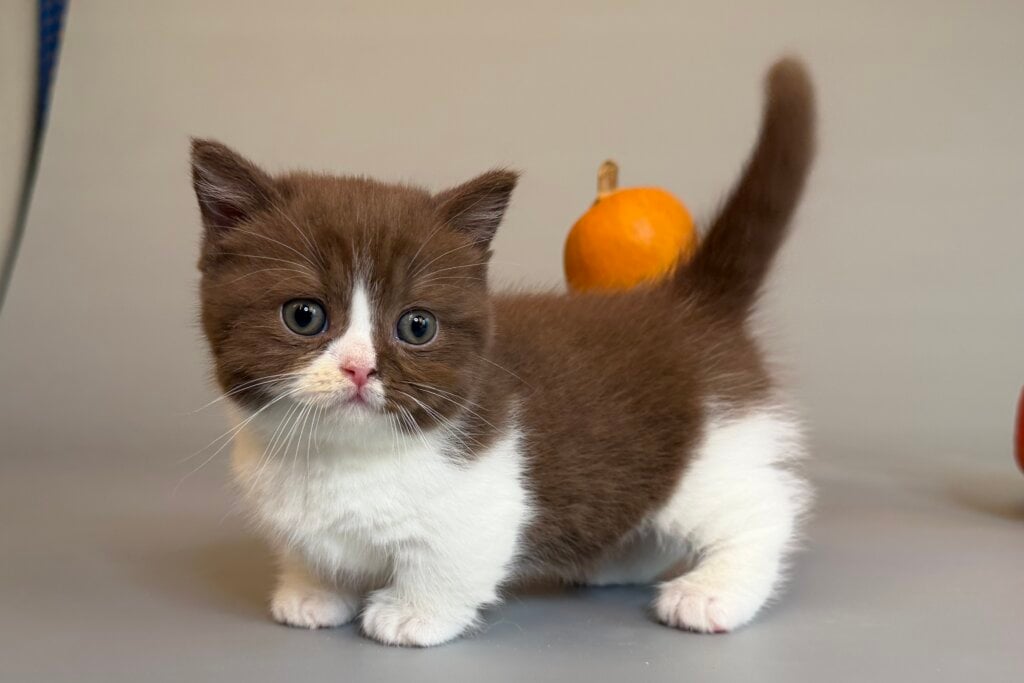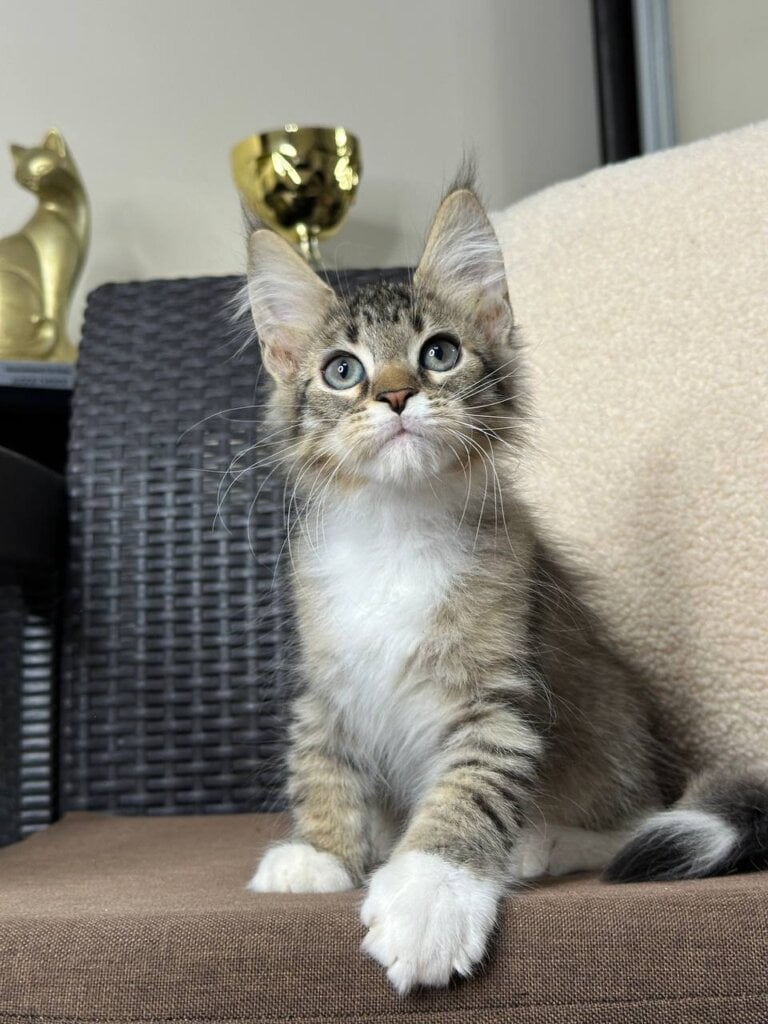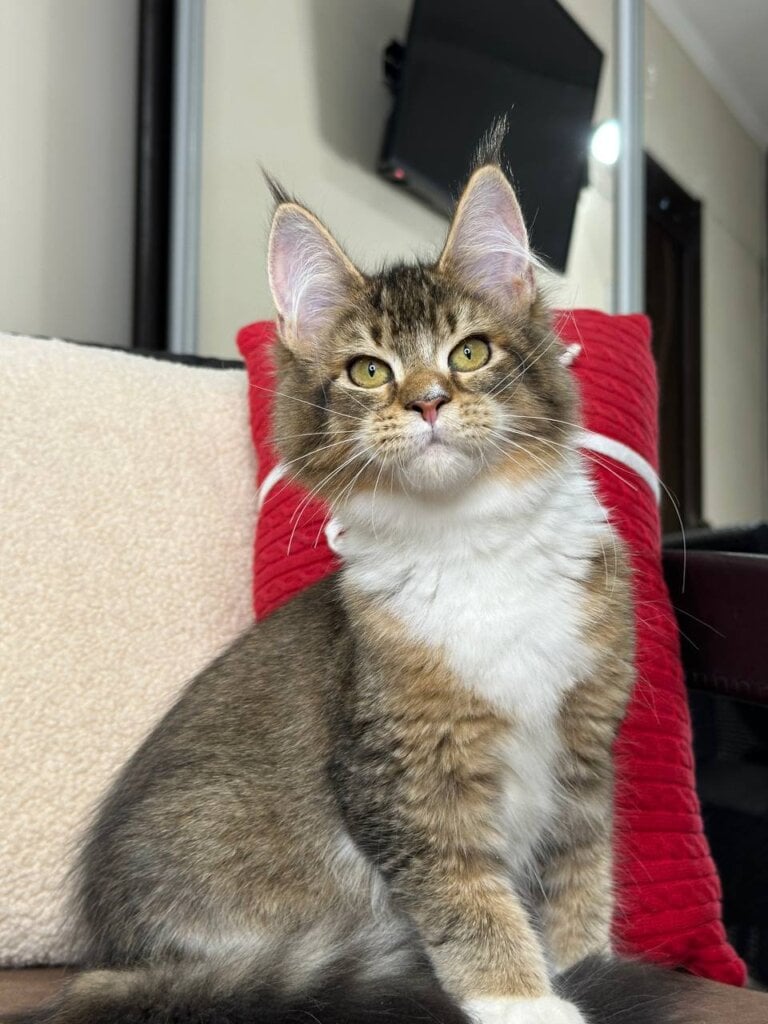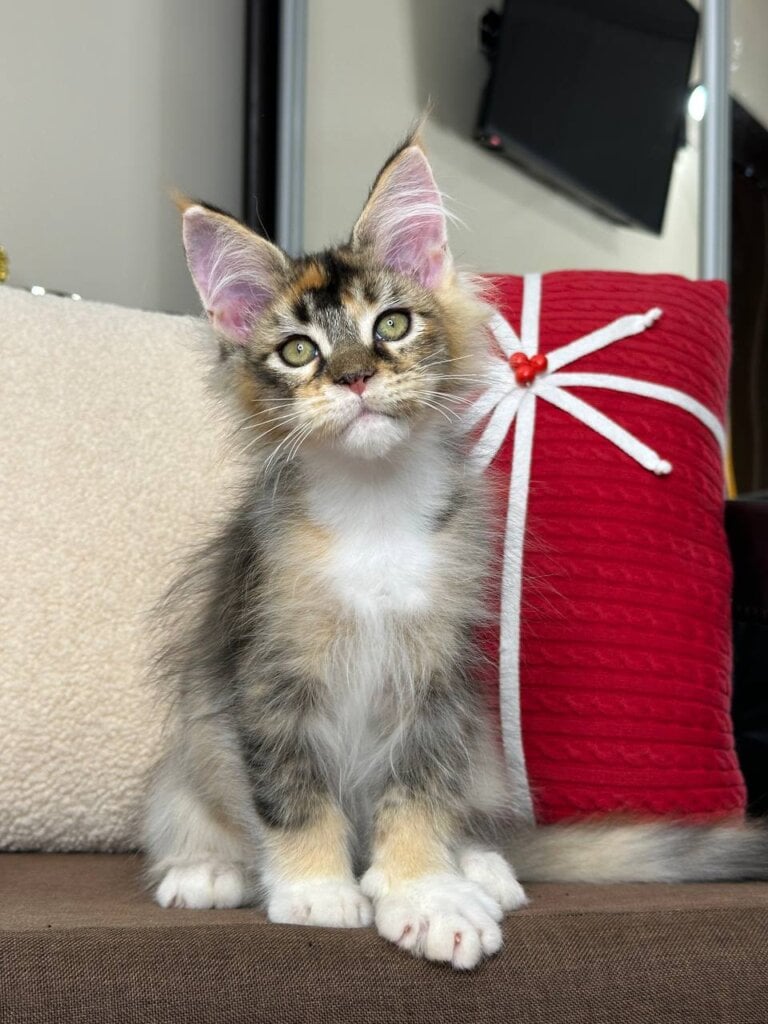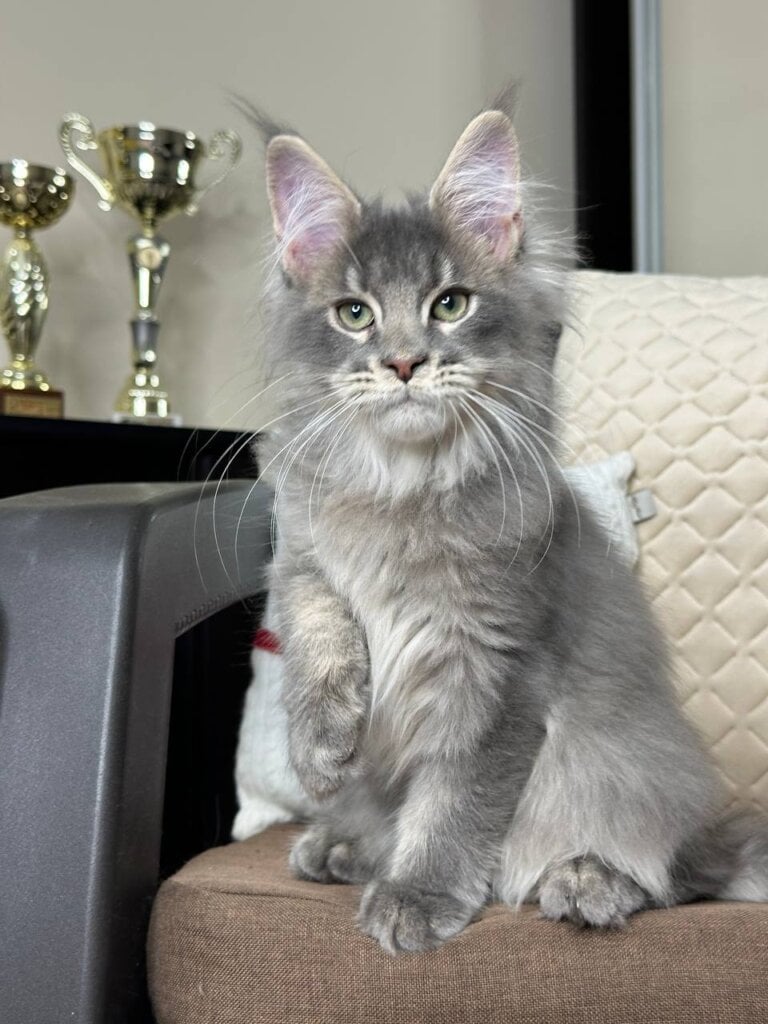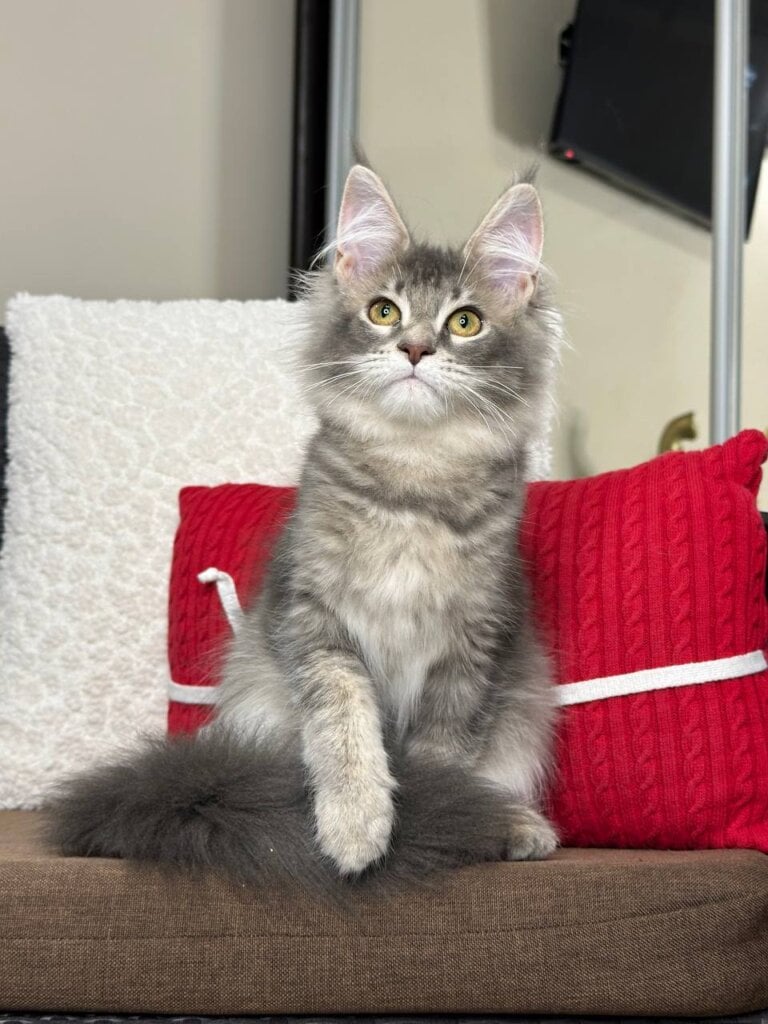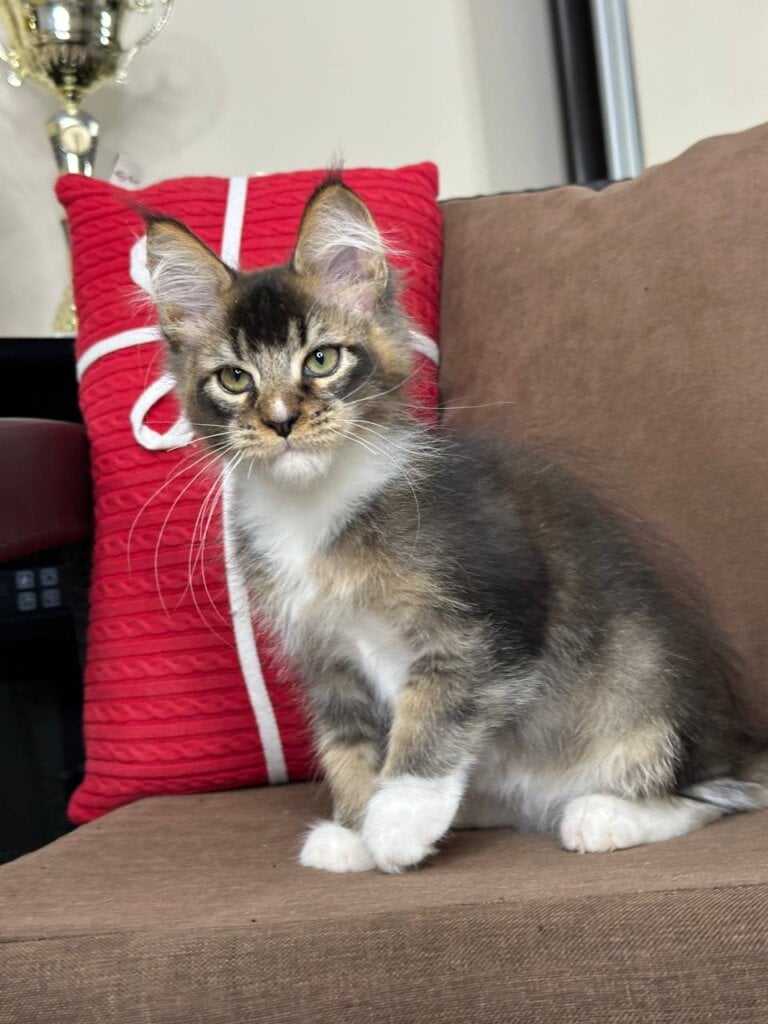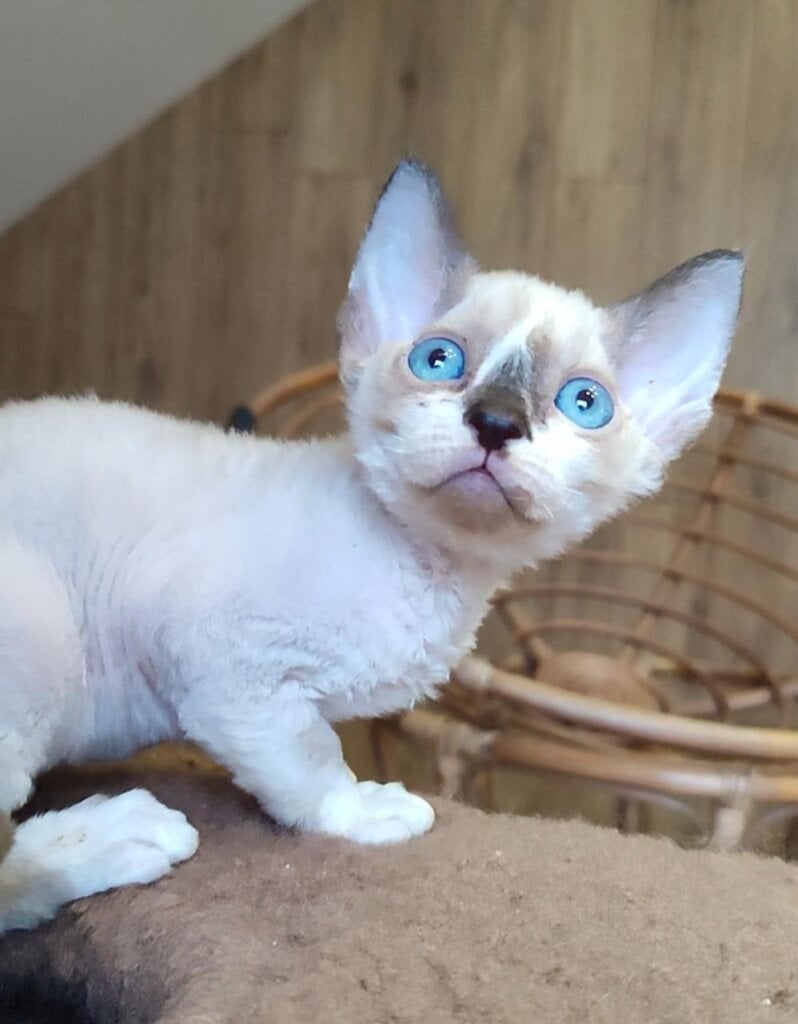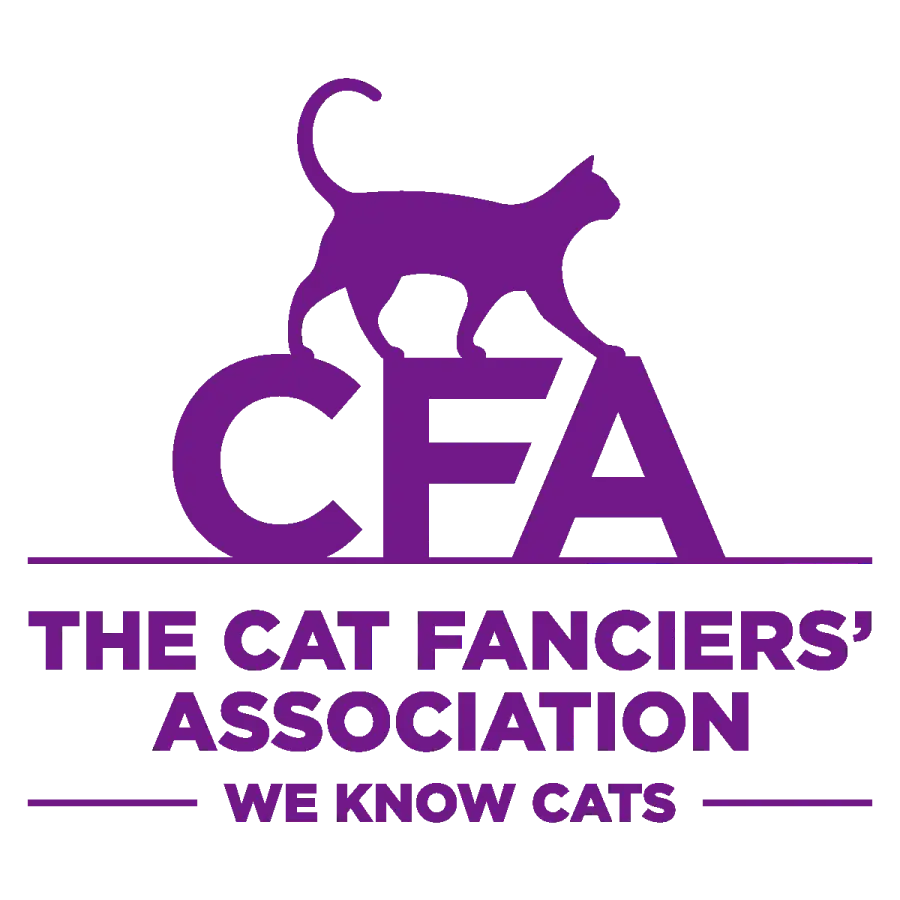A natural gene achondroplasia causes Munchkin legs to remain stunted in growth while the rest of the body grows like other cats. This is due to a dominant gene, meaning that even one short-legged parent can pass it on. The short legs don’t slow them down much. To assist you in learning more about munchkin cats, let’s dig into what makes them unique.
The Genetics Behind Munchkin Cat Legs
They have short legs due to a genetic mutation that alters their bone growth. Here we explore the genetics behind their signature feature, how it’s inherited, and what distinguishes Munchkin cats from other short-legged furballs.
1. The Mutation
The Munchkins’ short legs are the result of a gene mutation known as chondrodysplasia, a form of achondroplasia. A genetic mutation limits the growth plates in their long bones, so their legs remain short even as the rest of their body develops. It’s the same sort of mutation that you see in Dachshunds and Corgis, but in cats, it manifests as a very specific appearance.
This mutation might impact health. Other cats may hop around a little differently or develop osteoarthritis as they mature. There are worries about back or disc issues, though not all Munchkins carry such health risks. Breeders have a lot to do with this. In selecting healthy parents and screening for problems, they assist in minimizing the risk of serious issues. Still, scientists concede we have a lot to learn about how this mutation operates and what it means for long-term health.
2. Dominant Gene
Munchkin short legs is a dominant gene, so a copy from either parent creates a short-legged kitten.
If the gene is present in just one parent, approximately 50% of the kittens have short legs. This dominant pattern simplifies your ability to anticipate which kittens will express the trait. For breeders, that translates to thoughtful breeding being essential. Inbreeding Munchkin cats together can result in 25% of kittens dying because of inheriting the gene twice. The rest of the kittens will be either standard (short-legged) or normal-legged. Ethical breeders care about the quality of life of each kitten, not just their appearance.
3. Inheritance Pattern
If you examine a Munchkin litter, you’ll notice a variety of leg lengths. That’s all due to the way the gene inheritance works. A heterozygous Munchkin cat can produce short- or normal-legged kittens, depending on its mate.
Understanding these patterns allows breeders to sidestep health hazards. If 2 short-legged Munchkins mate, ~25% of the kittens will get 2 copies of the gene and may not survive. Responsible breeding involves breeding a Munchkin with a normal cat in order to maintain healthy kittens. This ensures kittens the best opportunity for a good life and maintains the integrity of the breed.
4. Not Dwarfism
Munchkin cats don’t suffer from dwarfism. Their shortened legs are due to a particular gene, rather than a general growth disorder.
Other dwarf breeds tend to be more unhealthy. Munchkins’ bodies are fairly proportional all around except for their legs. That’s their distinction.
A lot of folks mistake the term “dwarfism” for the Munchkin breed. It’s not exactly it.
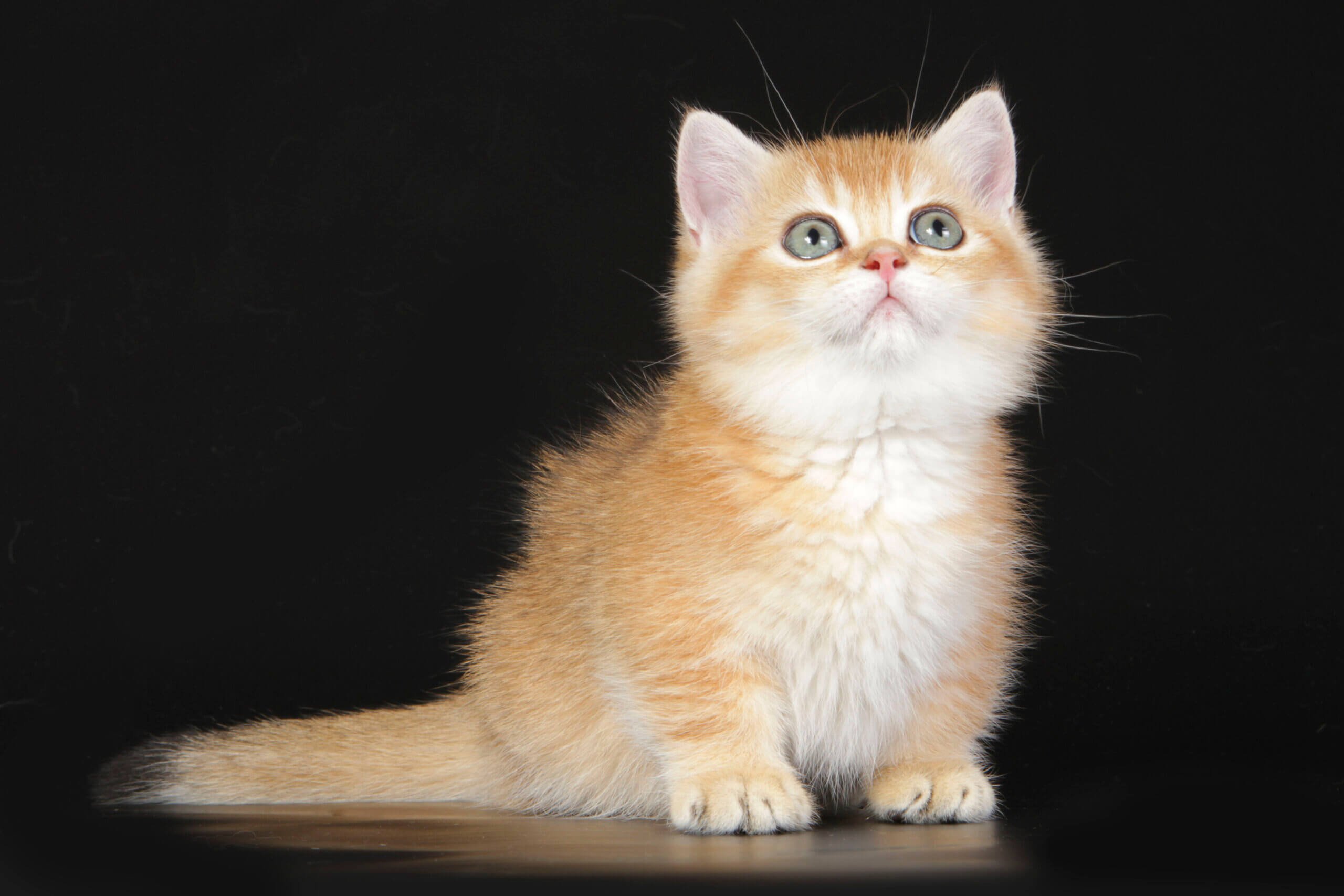
A Controversial History
The Munchkin cat’s stumpy legs run deeper than just a funny look. Their tale is one of controversy, doubt, and changing attitudes in the cat universe and beyond. The breed’s breakout started in the late 20th century, rapidly pulling a wedge between enthusiastic breeders and suspicious animal activists.
Accidental Discovery
Munchkin cats were originally observed by accident in Louisiana in the early 1980s. A schoolteacher, Sandra Hochenedel, discovered two short-legged cats on the street. She called one of them ‘Blackberry’, and before long, Blackberry had kittens that sported the short-legged appearance. Word got around quickly among feline fans and breeders. These cats were notable for their bunny-like hops and other-worldly locomotion, which endeared them to many and captivated others. Hobbyists recognized the chance to forge a new path in the feline universe. Early breeders labored diligently to increase their population and trace their lineage. As more short-legged kittens emerged, the Munchkin’s star started to rise, catching on at cat shows and in pet circles.
Breed Development
It was a struggle to get the Munchkin breed off the ground. Breeders needed to determine how to establish definitive standards for size, health, and looks. They had to address worries about the dominant gene for the short legs. Some breeders had pushback from cat associations who fretted about breeding cats with a genetic mutation. The CFA and FIFe refused to recognize the breed due to health risks and animal welfare. By comparison, it was TICA that took them in first in 1994, which helped jump-start their exposure. Responsible breeding became crucial. Top breeders advocated for rigorous health screens and cautious pairings to help reduce risks such as osteoarthritis, which it turns out can be more common in short-legged cats.
Recognition Debate
Controversy surrounding the Munchkin’s position in the feline community persists. Others, including experts and animal welfare organizations, say these cats are “deformed creatures” and it’s unethical to breed them intentionally. Critics think that prioritizing extreme features endangers cats for suffering and arthritis. Proponents argue that Munchkin cats are healthy when responsibly bred and that their playful personality brightens many households. The split has caused outright bans in the Netherlands and Victoria, Australia, where Munchkin breeding has been deemed ‘not to be acceptable.’ The Australian Capital Territory deems them malformed, too. Some show judges have even quit in protest of their inclusion, dubbing it a blow to ethical breeding. Cat shows and media still influence the public’s perception of Munchkins, some shows rewarding them while others won’t permit them at all.
Evolving Perceptions
Societal perception of Munchkin cats has evolved as well. Initially, a lot of people thought they were weird – or even unhealthy. A few folks still fret about their health, particularly if it’s joints – osteoarthritis being the chief concern – thanks to the short leg gene dominant. Still others have fallen in love with the breed’s eccentric spirit and distinctive appearance. Social media and pet influencers have rehabilitated the Munchkin’s image, making them a favorite in many countries, despite bans in others.
Health of Munchkin Cats
Munchkin cat are the ones with the short legs, the product of a genetic mutation impacting cartilage growth. This special characteristic doesn’t just add appeal, it adds health risks. Their health relies on conscientious caretaking, regular checkups, and knowing what their bodies endure.
Skeletal Stress
Munchkin cats have a bone structure that places additional stress on their joints. Their stunted limbs cause their bodies to bear weight in a different manner than other cats. This can strain their knees, hips and elbows, causing movement to be stiff and sometimes painful.
Left untreated, this skeletal stress can eventually cause joint problems. Some Munchkins can develop osteoarthritis at an earlier age. Owners might observe their cat moving slower, favoring a leg or shirking jumps. These symptoms tend to appear as the cat gets older, however some changes are initially subtle.
Being mindful of your cat’s behavior is key. Keep an eye on any stiffness, difficulty getting up, or indications of pain. Early detection can help control pain.
Providing a balanced diet and maintaining your cat at a healthy weight is imperative. Excess weight puts stress on joints. Top-notch food with joint nutrients can make a world of difference.
Spinal Issues
| Spinal Issue | Effect on Cat | Notes |
|---|---|---|
| Lordosis | Spine curves inward | Can cause pain, less movement |
| Scoliosis | Spine curves to the side | Leaning, uneven gait |
| Pectus excavatum | Chest sinks inward | Heart/lung compression |
Spinal issues may restrict a Munchkin cat’s mobility and playfulness. Cats with spinal curvature can walk unevenly or be less interested to climb. Pain from spinal issues can cause quiet behavior.
If you detect these issues early, that’s best. Vets may employ X-rays or exams to identify problems and recommend treatment to relieve pain and decelerate transformations.
If you see any postural or movement changes, address them with your vet immediately. Routine checkups catch problems before they get out of hand.
Mobility Concerns
Leg length alters the way Munchkin cats move, run and play. They may not jump as high or run as fast as other cats. Others have a distinct “bunny hop” gait.
Their locomotion style requires safe places to play and nap. Ramps and low shelves assist them to access preferred locations without leaping too far. Soft bedding can relieve pressure on joints.
Observing the way your cat walks allows you to detect problems at an early stage. If your Munchkin is tired, wobbly or sore, avoid jumping and rough play. Support them to be active, but take it nice and easy to avoid harm.
Importance of Regular Vet Checkups
- Vets can detect joint or spine issues prior to becoming severe.
- Annual exams assist in maintaining a healthy weight and diet, which benefit the joints.
- Early care slows problems and keeps cats comfortable.
- Routine checkups go a long way for lifelong health.
Life with a Munchkin Cat
Munchkin cats are different because of their stubby legs, which influence everything from their play style to how they integrate into domestic life. Their signature appearance and personality exude a mix of affection, playfulness and loyalty that captivates families and feline enthusiasts across the globe.
- It’s those short legs that give them their signature waddle.
- They like to sit up on their hind legs, prairie dog style.
- Their walk and run are mischievous and spirited, not clutzy.
- This hopping gait contributes to their nick-name the ‘magpie of the cat world.’
- Munchkin cats waddle is as iconic as their stature.
Unique Movement
There is no other motion like that of the Munchkin cat. Their legs, shorter than most breeds, result in a rolling stride that’s adorable and unique. Rather than a normal cat pounce, they take a hop or soft shimmy. This waddle doesn’t hinder their inquisitiveness or tendency to explore every crevice in the house.
Although their short legs impact their jumping ability, Munchkins cats are agile in their own right. They might not jump onto the highest cabinets, but they’re agile and enjoy chasing floor toys. Their playful spirit is infectious, and their playfulness is spirited. Owners can maintain their health with a little encouragement to stay active. Interactive toys, mini climbing posts, and regular rounds of play keep them fit and content. Their jolly prance, complete with that trademark hind-leg perch, transforms an ordinary stroll into a smile-inducing moment.
Play Style
Munchkin cats add a different vitality to toy time. They are scrappy and intelligent, discovering new means to amuse themselves and their households. Their shorter legs imply they don’t always jump as high as other breeds, but they make up for it through quick dashes and sudden turns, which can be just as entertaining to watch.
They absolutely adore toys that roll, wobble or squeak! Food puzzles, mechanical mice and feather wands are big hits. Because they’re notorious hoarders of sparkly objects, you just knew your jewelry or keys were gonna end up in their secret stash. Just make sure to keep them mentally stimulated – it’s the best way to beat boredom and it’s good for their soul. Interactive play creates a bond and keeps their mind and body sharp.
An active home-lots of toys and secure climbing spots-lets their inner clown sparkle.
Home Adjustments
For a Munchkin, little home modifications go a long way. Opt for cat trees and furniture with lower platforms so they can climb and rest safely. Stay away from tall ledges or wobbly shelves. Store their favorite toys and bedding in accessible locations, so they don’t stress their joints.
Safety, first. Munchkin cats are prone to joint and spine complications, so non-slip mats and ramps avoid injury.
Consider their needs when decorating. A warm, convenient spot makes them feel included in the family.
Accessible homes keep Munchkin cats happy and healthy.
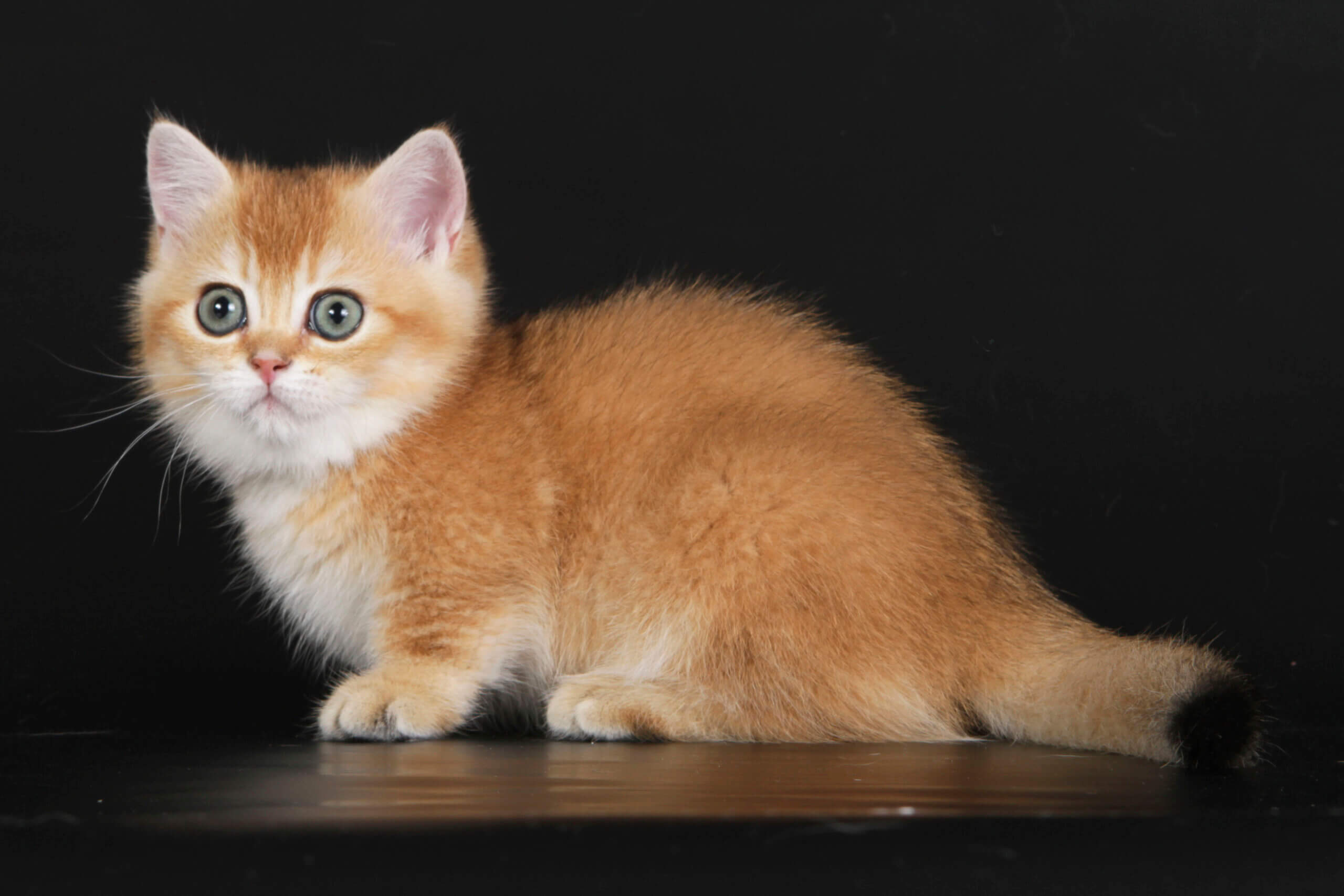
The Ethical Viewpoint
The short legs in Munchkin cats are the result of a gene mutation known as feline disproportionate dwarfism. This quality has caused much controversy over the welfare of these animals, particularly with regard to selective breeding and animal husbandry globally. Several animal welfare groups, breeders and vets are outspoken about the ethics of breeding cats with this condition. Worries center on pain, joint problems, and chronic impact, prompting the question of what’s ethical for both cats and owners.
- Advocate for clear breeding guidelines and enforcement.
- Educate the public about animal welfare risks.
- Promote adoption over breeding.
- Encourage research into breed-related health problems.
- Support veterinary oversight in breeding programs.
Breeder Perspectives
Good breeders have hard decisions to make with Munchkins. Numerous concede that select breeding for shortened legs may result in health risks such as joint strain and pain, which can persist across a cat’s lifespan. This isn’t just a viewpoint-specialists have demonstrated that breeding cats with deformities like scurfy disproportionate dwarfism causes immense harm, to the extent that it’s deemed torture breeding in some nations.
Ethical breeders prioritize the health of their cats. They test-breed cats for common issues, don’t breed cats with the same faults, and only breed lines that have low health problems. They understand that birthing kittens with a high risk of pain or restricted movement isn’t responsible. Some breeders even quit breeding Munchkins altogether when they notice too many health issues.
Strike of Transparency Reputable breeders provide health test results, display where their cats live and discuss risks transparently. They inform new owners about what to anticipate, such as frequent vet visits and special care. Ethical breeders take it upon themselves to educate potential owners about the breed’s requirements and potential issues so families can make informed decisions.
Veterinary Opinions
Most vets agree that Munchkin cats are more likely to develop joint pain, osteoarthritis and other mobility issues. Abnormal joint stress due to short legs can result in pain and limit cats’ movement, impacting life quality. In certain countries, such as Austria, it is illegal to breed cats with these defects due to the pain it inflicts.
Vets look for early indicators of musculoskeletal pain or dysfunction during exams. They check for joint swelling, stiffness and altered gait. Routine checkups help us catch issues early and keep kitties as healthy as possible.
Good vet care is important. Vets provide tips on pain management, joint health and lifestyle changes that can help make life easier for felines dealing with arthritis. They prompt owners to inquire and note any shifts in their cat’s behavior. Open and honest discussions between owners and vets assist in identifying health issues promptly and strategizing care for each cat’s requirements.
Welfare Organizations
Animal welfare groups are hugely influential in advocating for improved breeding guidelines and cat care. They protest against painful or suffering-causing breeds, such as Munchkin cats. By categorizing specific forms of breeding as torture, they assist in safeguarding animals from suffering and raise consciousness.
They get behind adoption of cats in need and advocate for breeders to adhere to stringent health and welfare guidelines as well. Public service announcements tout the dangers of dwarfism and demonstrate to families how to raise special-needs felines. A few organizations even have programs to assist owners with vet expenses or rehome cats with health conditions.
Campaigns address breeders, owners and the public. They seek to inform all about the hazards, regulations and optimum methods for ensuring feline safety and contentment.
Beyond the Legs
Munchkin cats may be famous for their short legs, but their charm goes well beyond this distinctive characteristic. They’ve become household names not just for their appearance, but for their personalities, versatility, and how they seamlessly integrated themselves into millions of homes across the globe.
Personality Traits
Munchkin cats are known as being extroverted and self-assured. They’re inquisitive and energetic, wanting to be a part of any play or discover new hideouts. This makes them a delight to have around in households that desire a hands-on, vivacious friend.
They’re incredibly loving. Most families will discover that their Munchkin cat will curl up on laps or beside them when going to sleep at night. Their affectionate personality endears them to both adults and children alike, establishing trust and ease throughout the entire family. It’s not uncommon to witness a Munchkin trailing a beloved individual from room to room.
Smart and quick to learn, Munchkin cats They love a crossword or fresh board game, and will even happily munch on food puzzles, wind-up toys, or cat-friendly apps on a tablet. They’re mischievous as well-few Munchkins like to grab every glittery thing or small gadget and stash it in their secret hiding place. This weird habit earns them the nickname “magpies” from certain owners.
They’re also accommodating in terms of living arrangements. Munchkins are equally adaptable to apartments as they are spacious homes. Their nimbleness and assurance allow them to suit the majority of lifestyles, be it a solo individual or a large family.
Social Behavior
Munchkin cats are social and mingle well with other cats and even dogs. Their welcoming nature enables them to flourish in multi-pet households, and they immediately bond with new members.
If left alone too frequently, Munchkins can become lonesome or bored. They’re attention-hungry and do well with a furry friend around. It’s important to socialize them early, which helps them feel safe and relaxed in new environments.
Their presence can turn the vibe in a house. They unite and they even have the whole family playing or chilling together. A Munchkin’s love for company makes them a perfect match for families seeking an engaging pet.
Common Myths
Some folks assume short legs imply Munchkin cats can’t jump or move very well, and that’s completely false. They might not jump as high as other cats, but they’re very nimble, climbing furniture and zipping about with ease. There is a lot of misinformation about their health. Although they can encounter joint problems or spine issues, with proper care, the vast majority live healthy lives for 12 to 15 years or more.
Their fame in movies and on social media has distributed both truth and legend. It’s crucial for prospective owners to get beyond stereotypes and educate themselves on the actual needs and capabilities of this breed.
